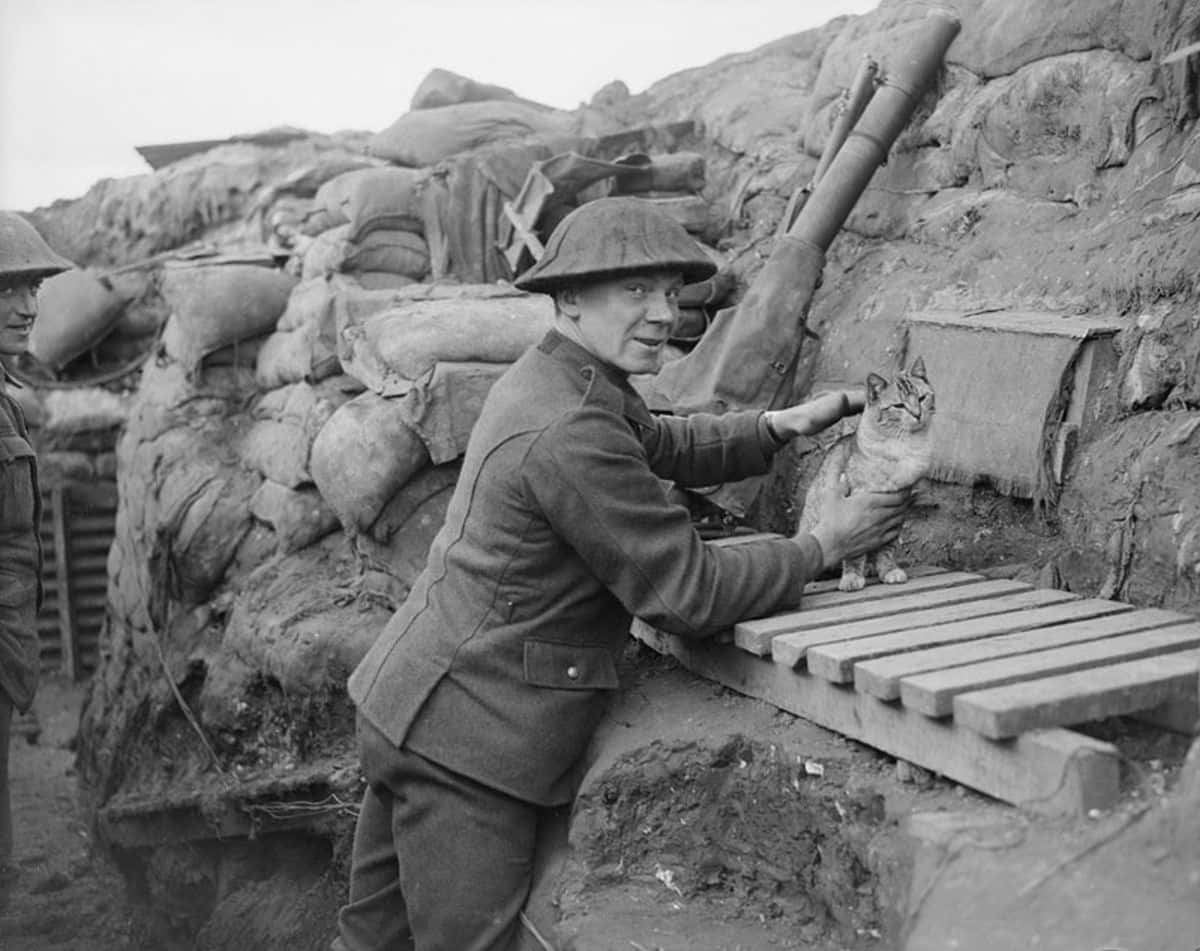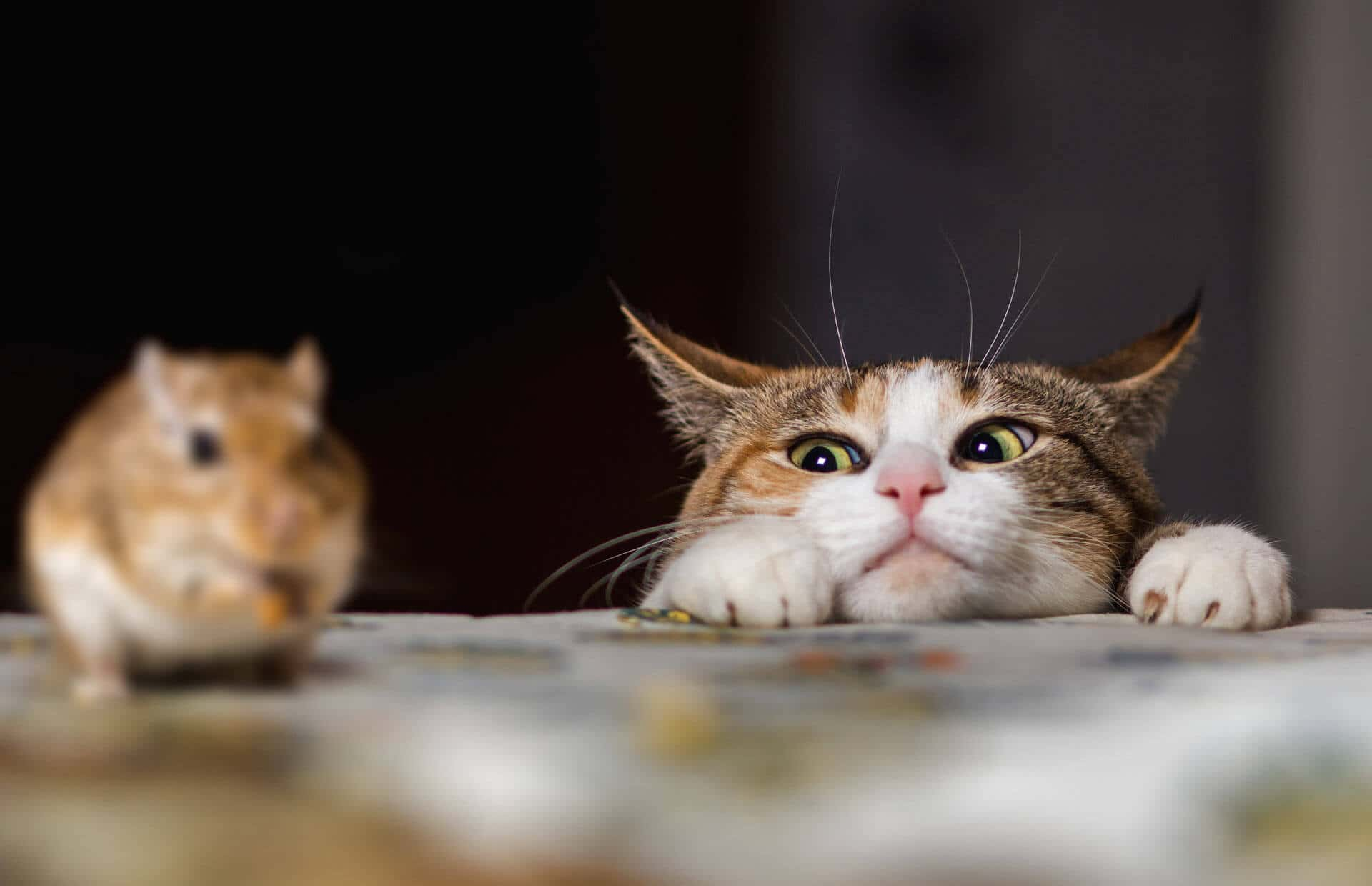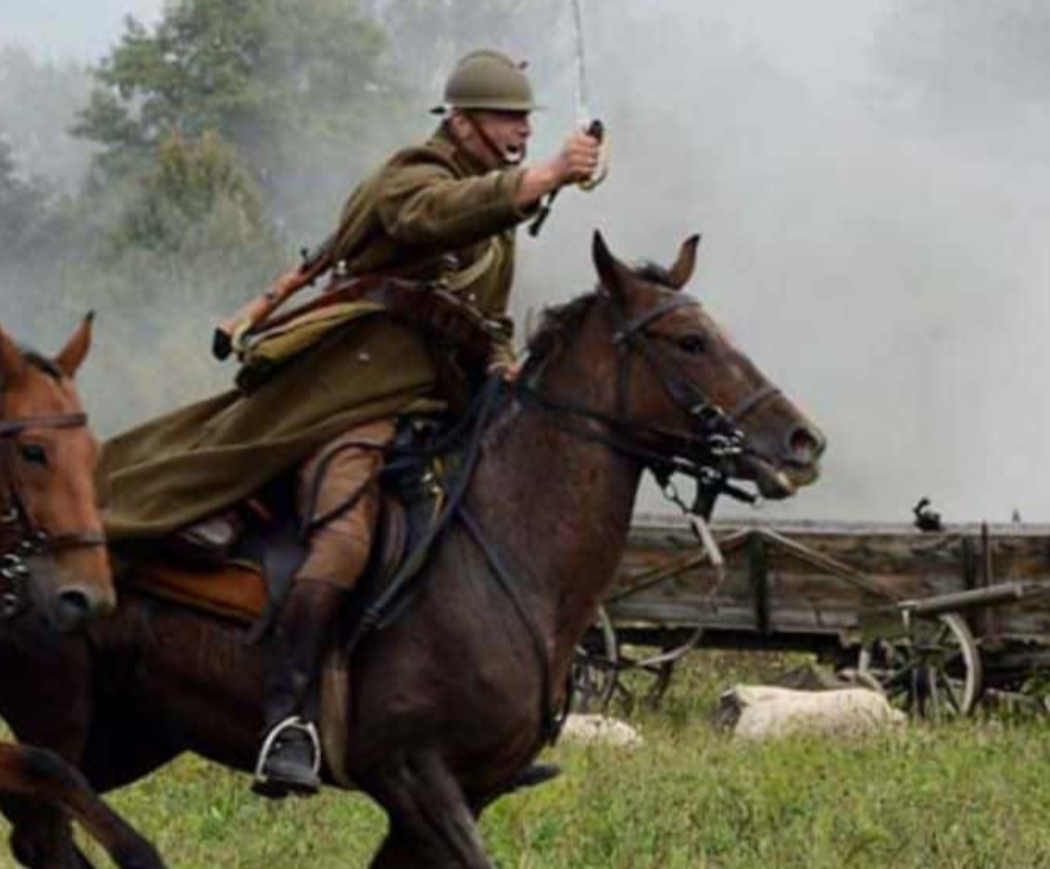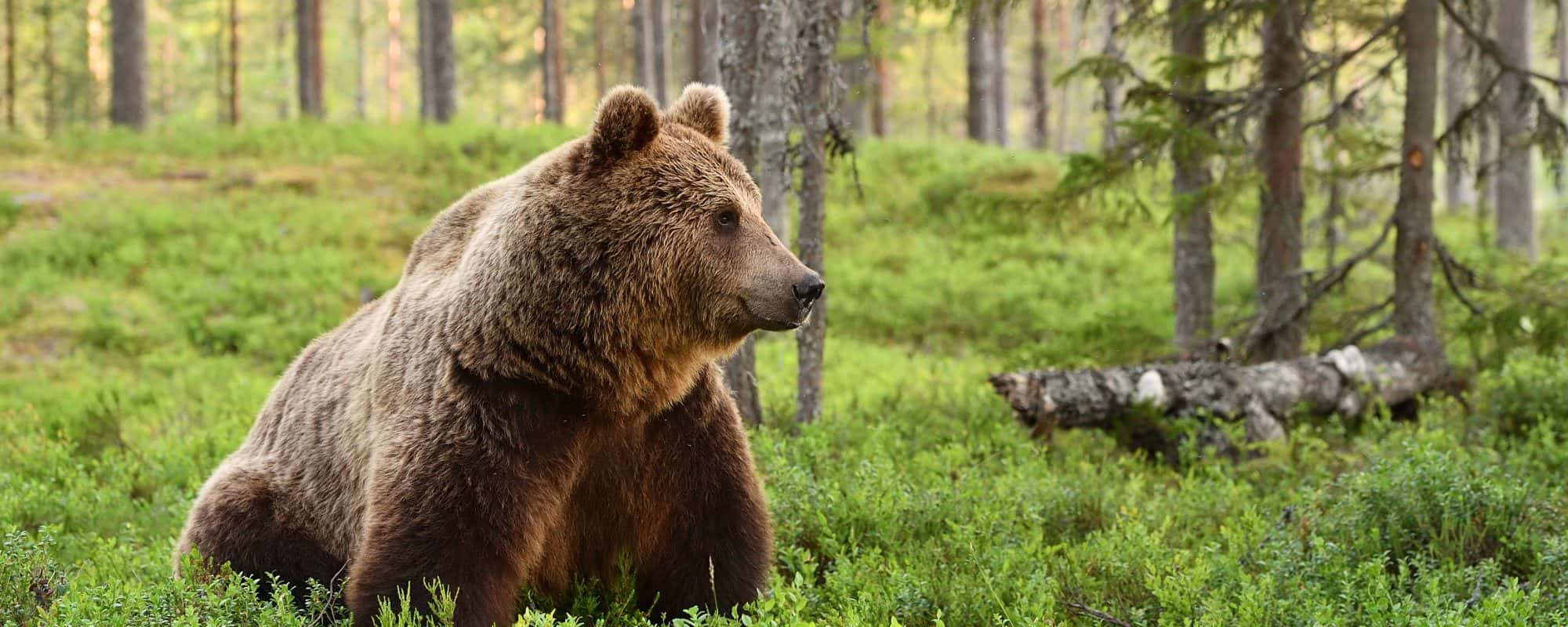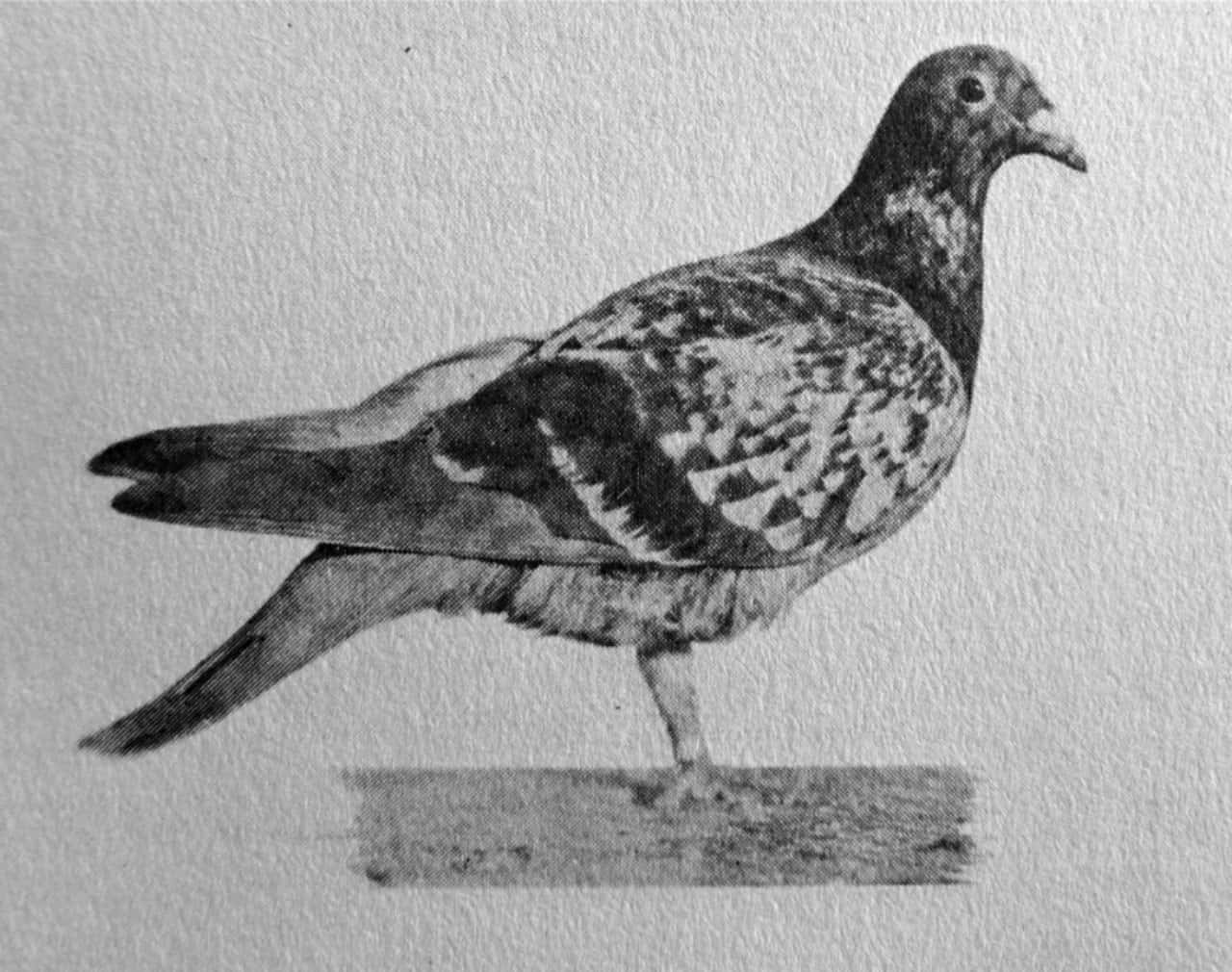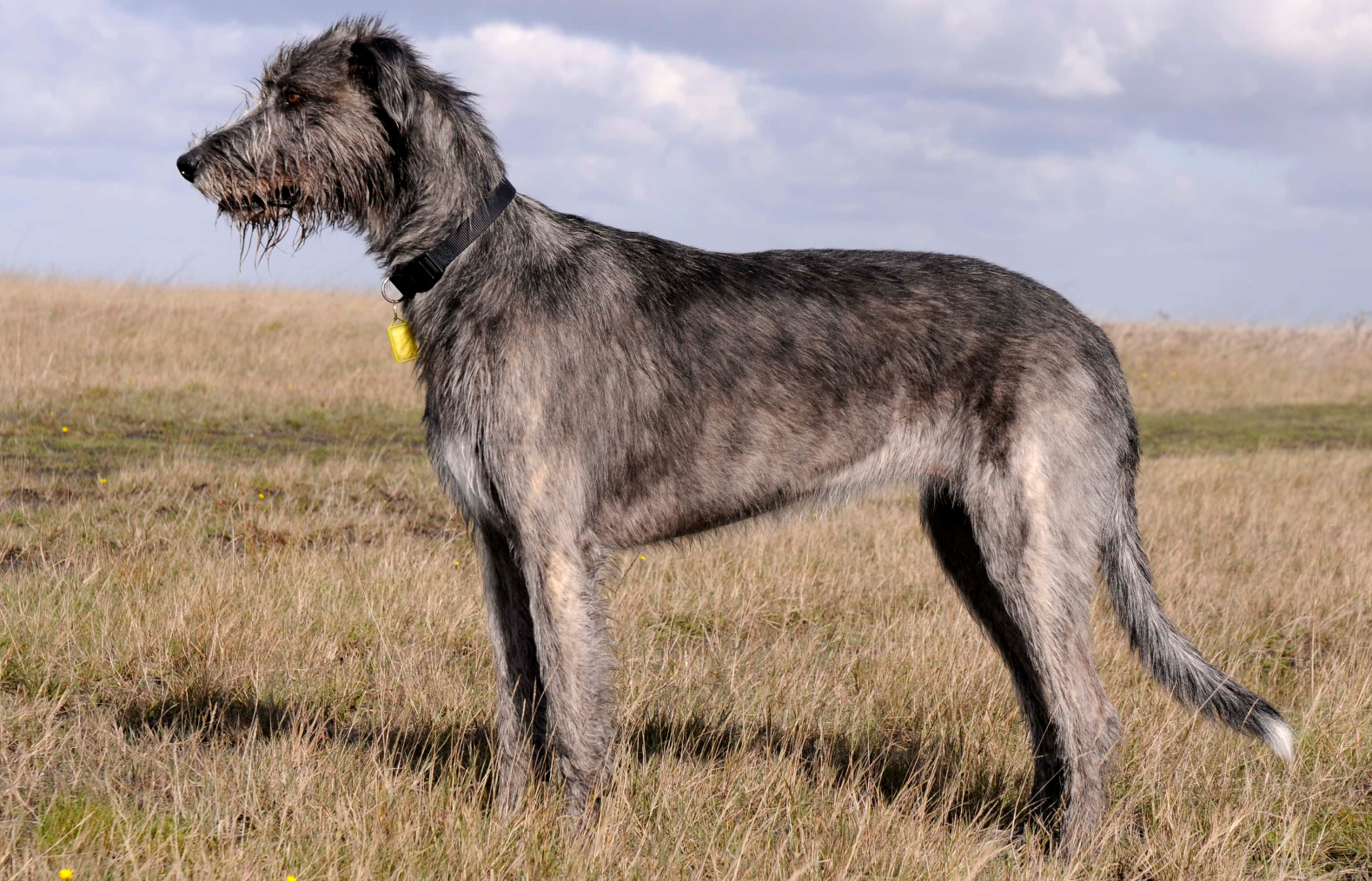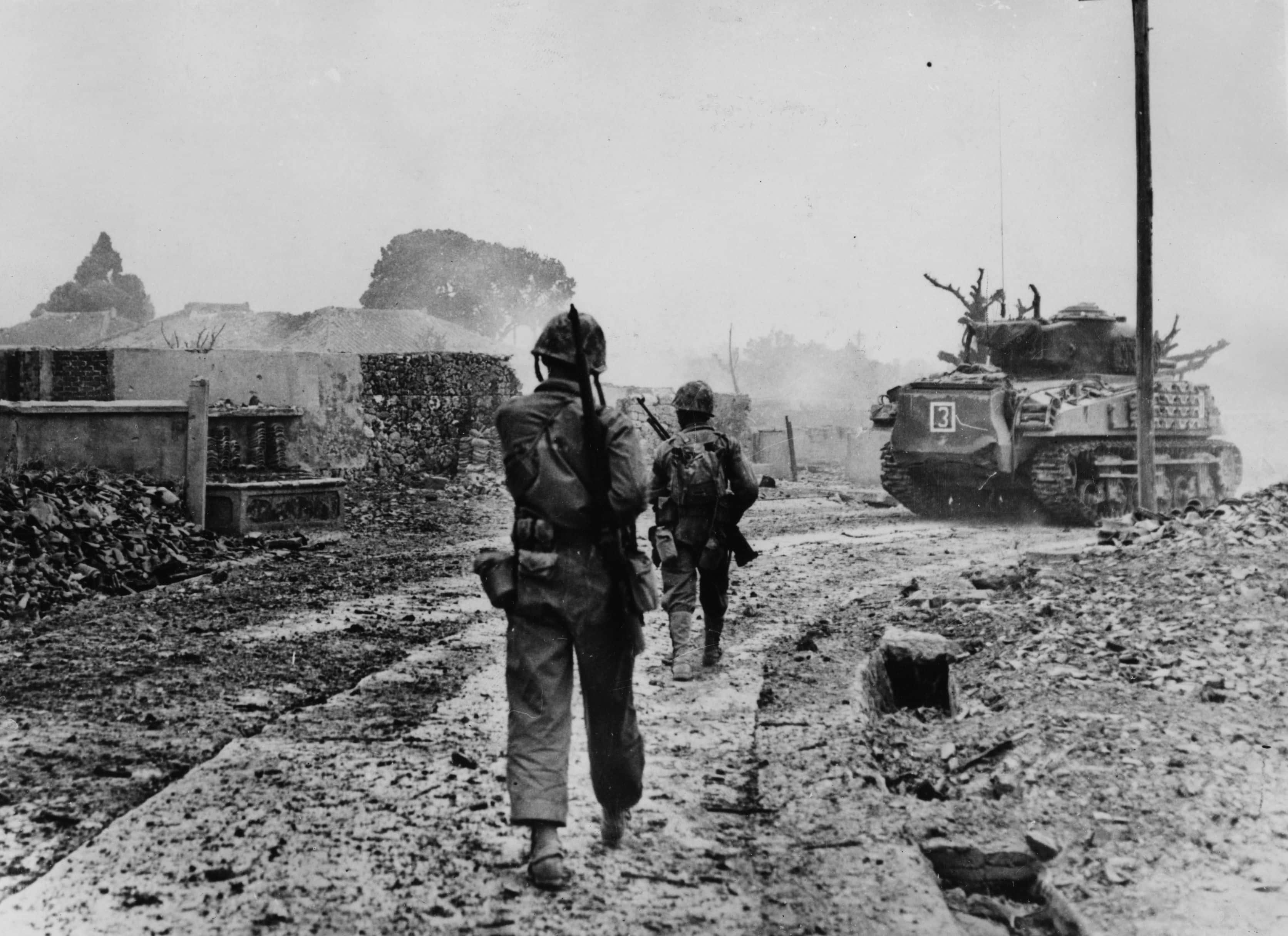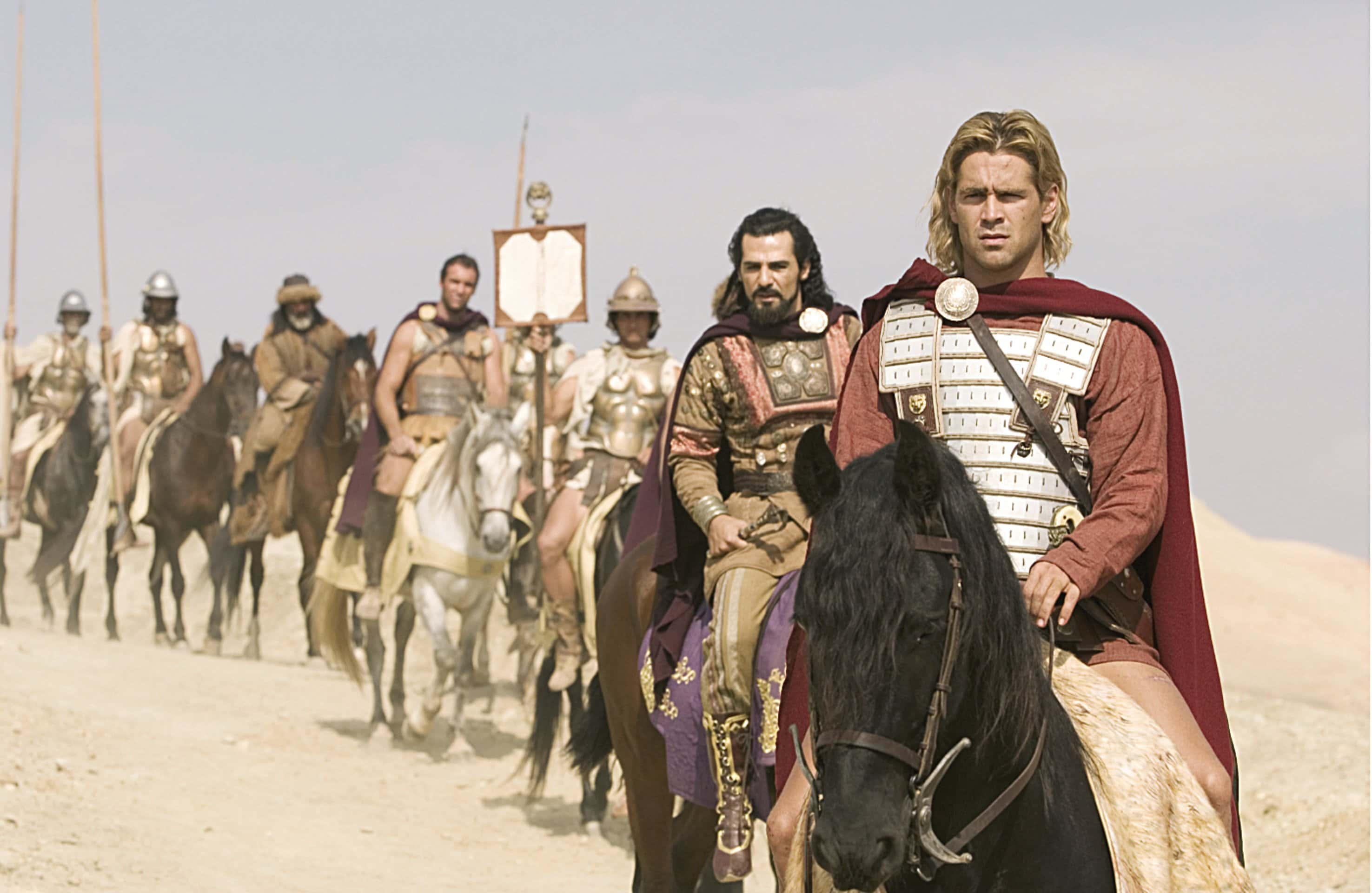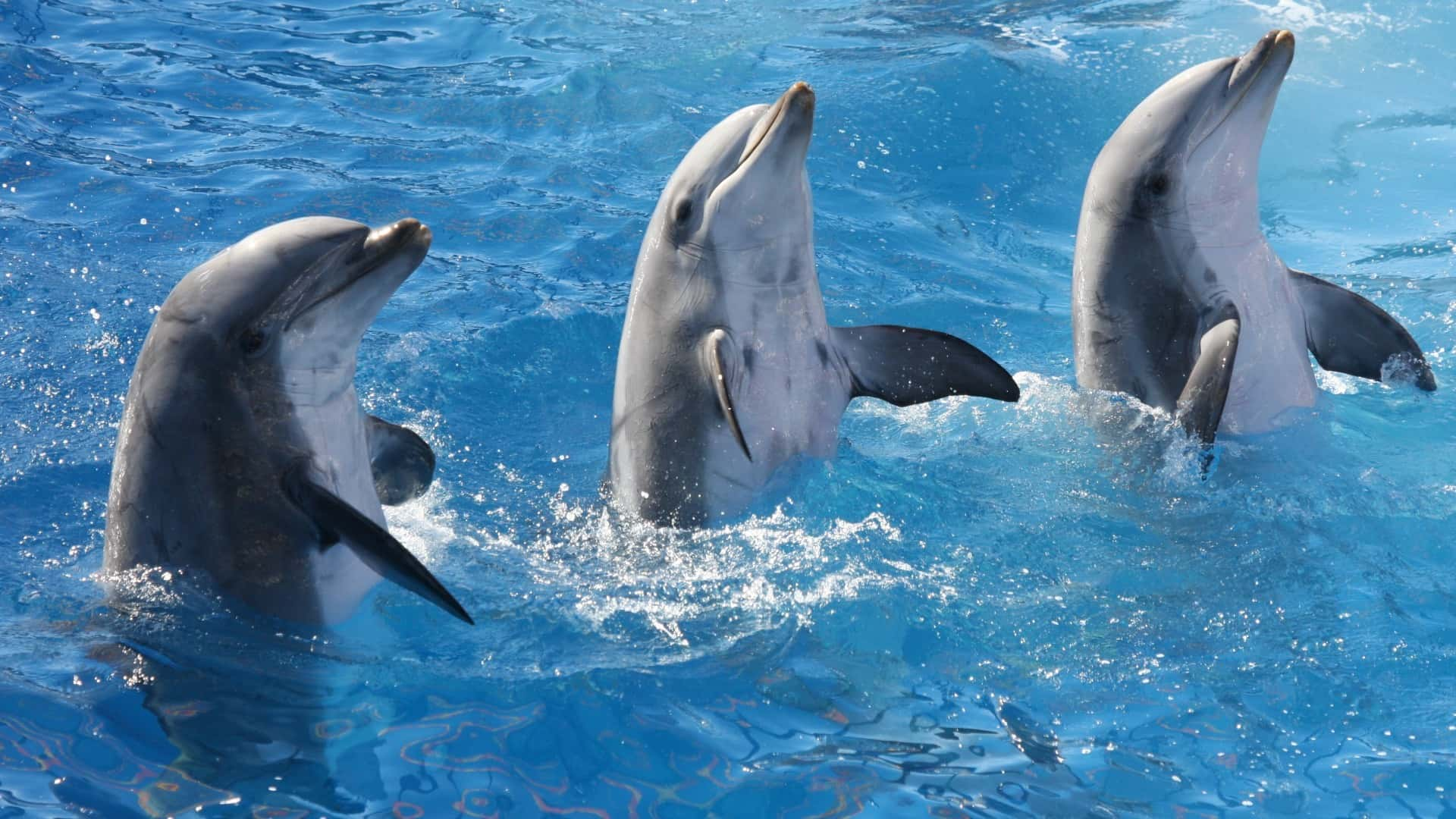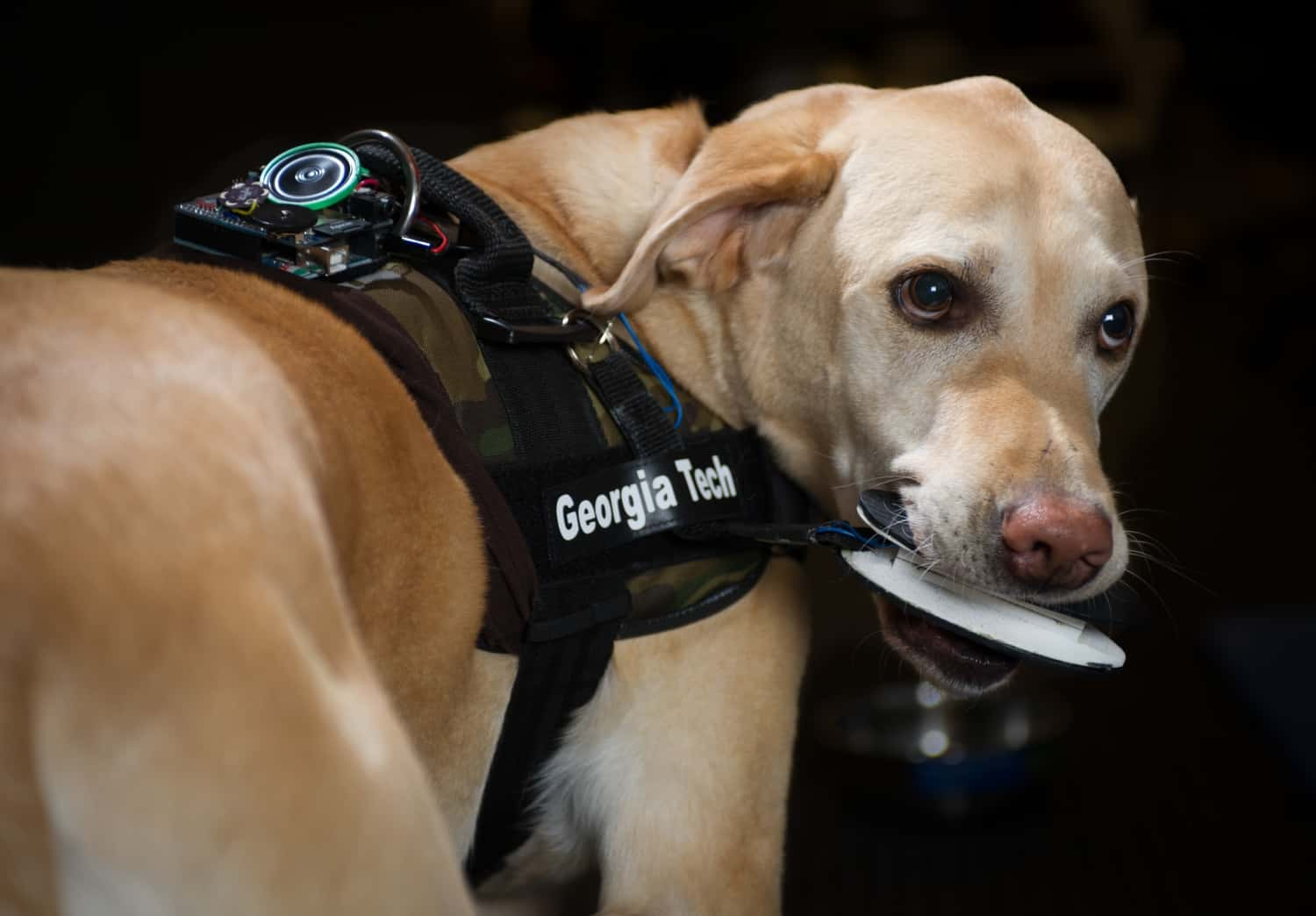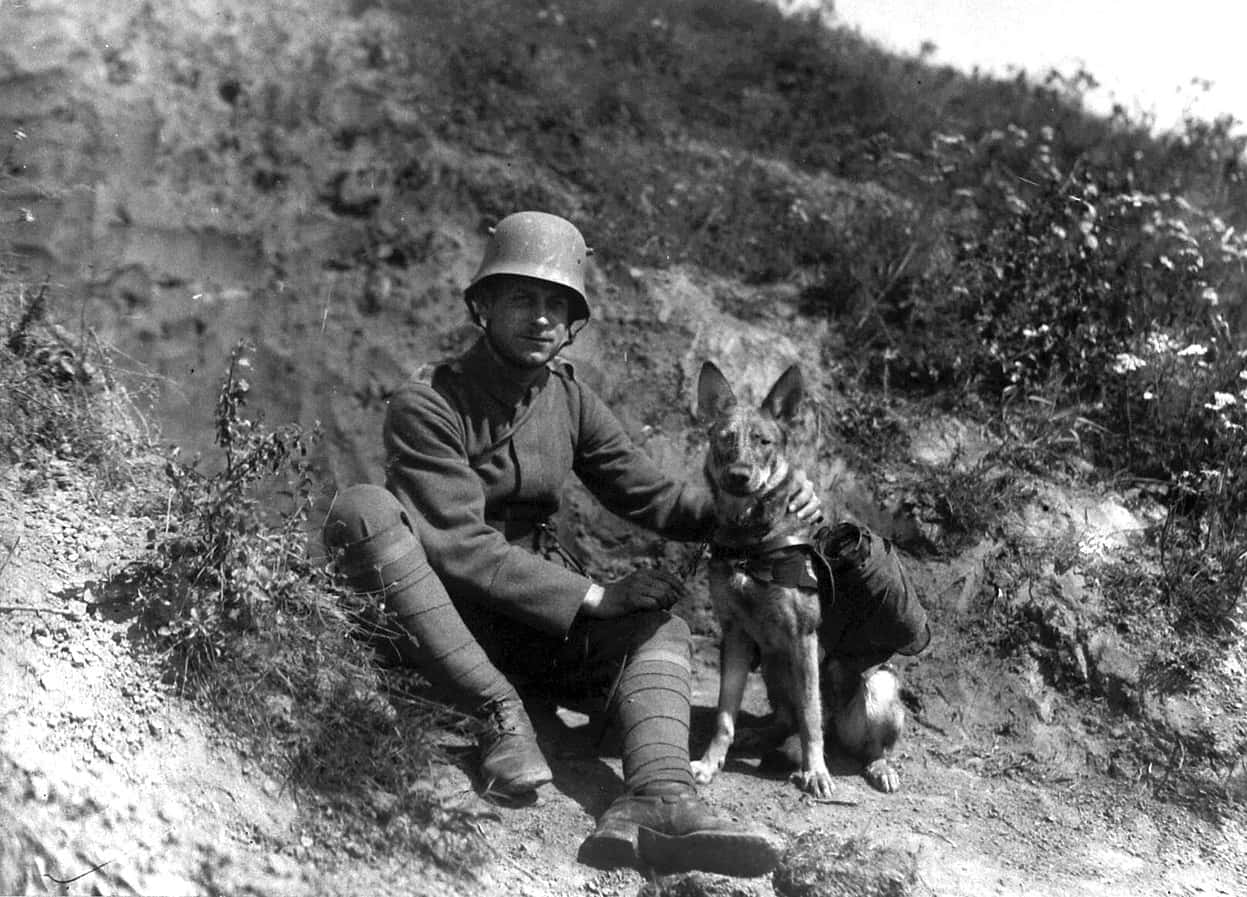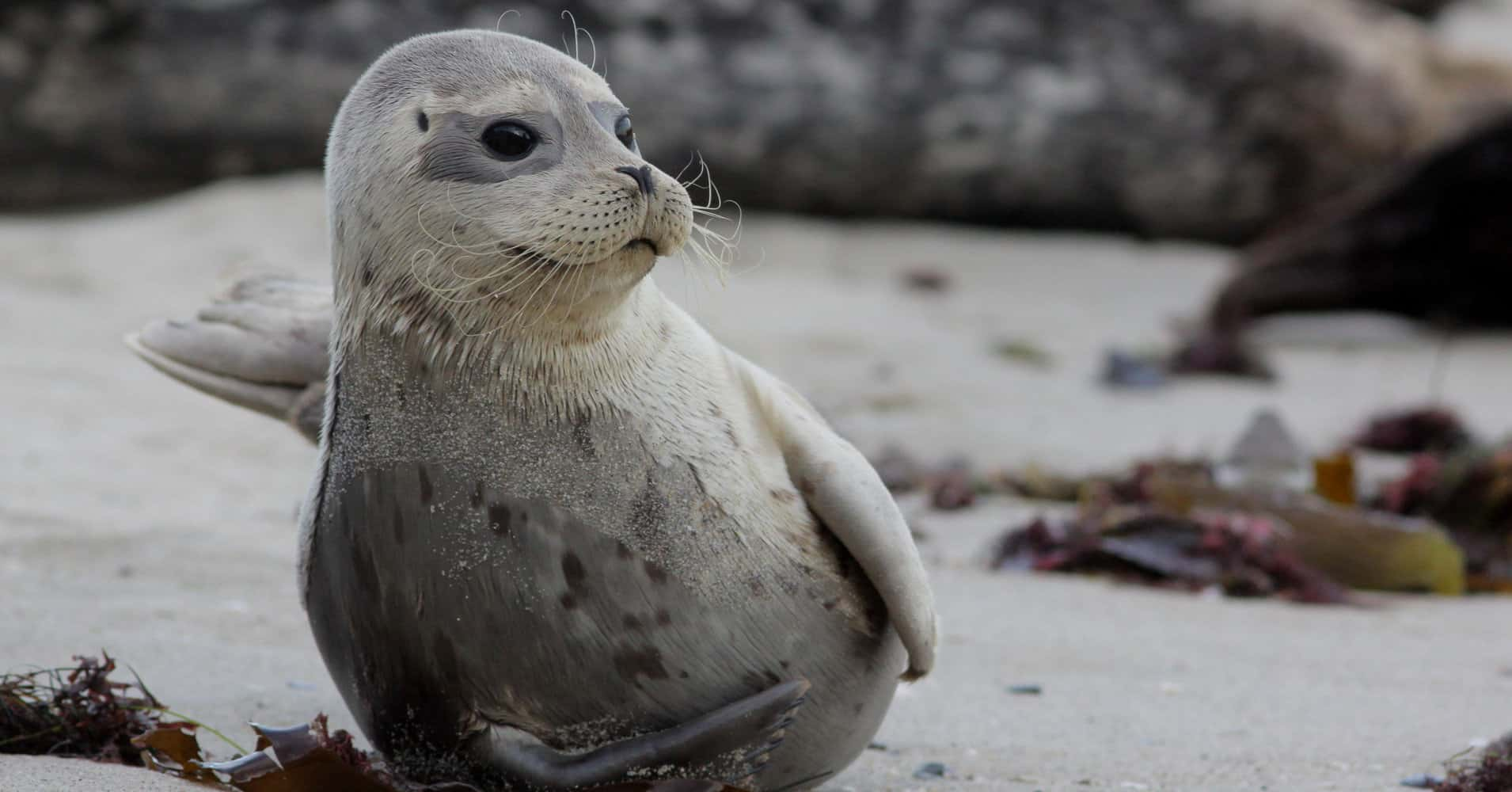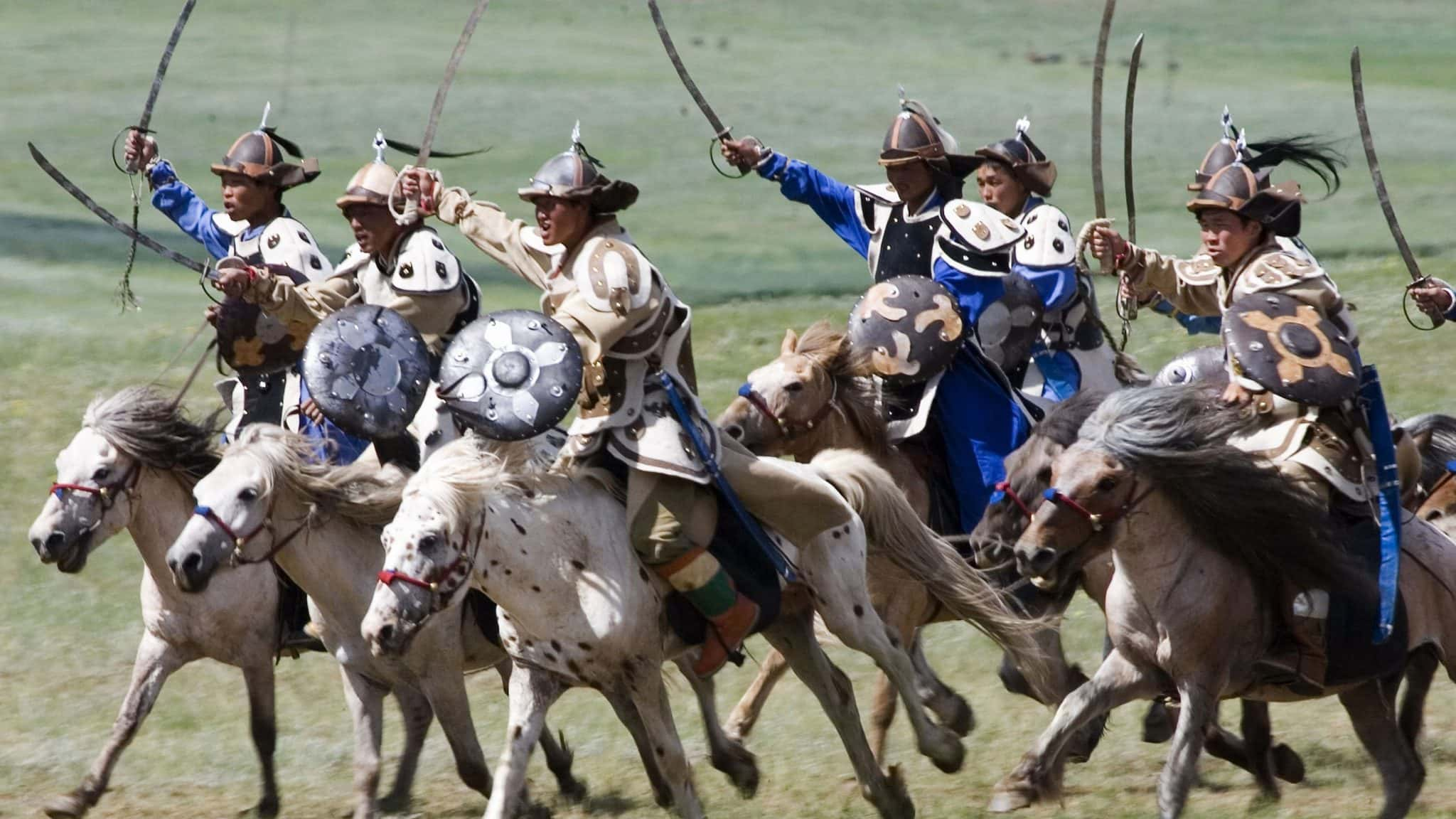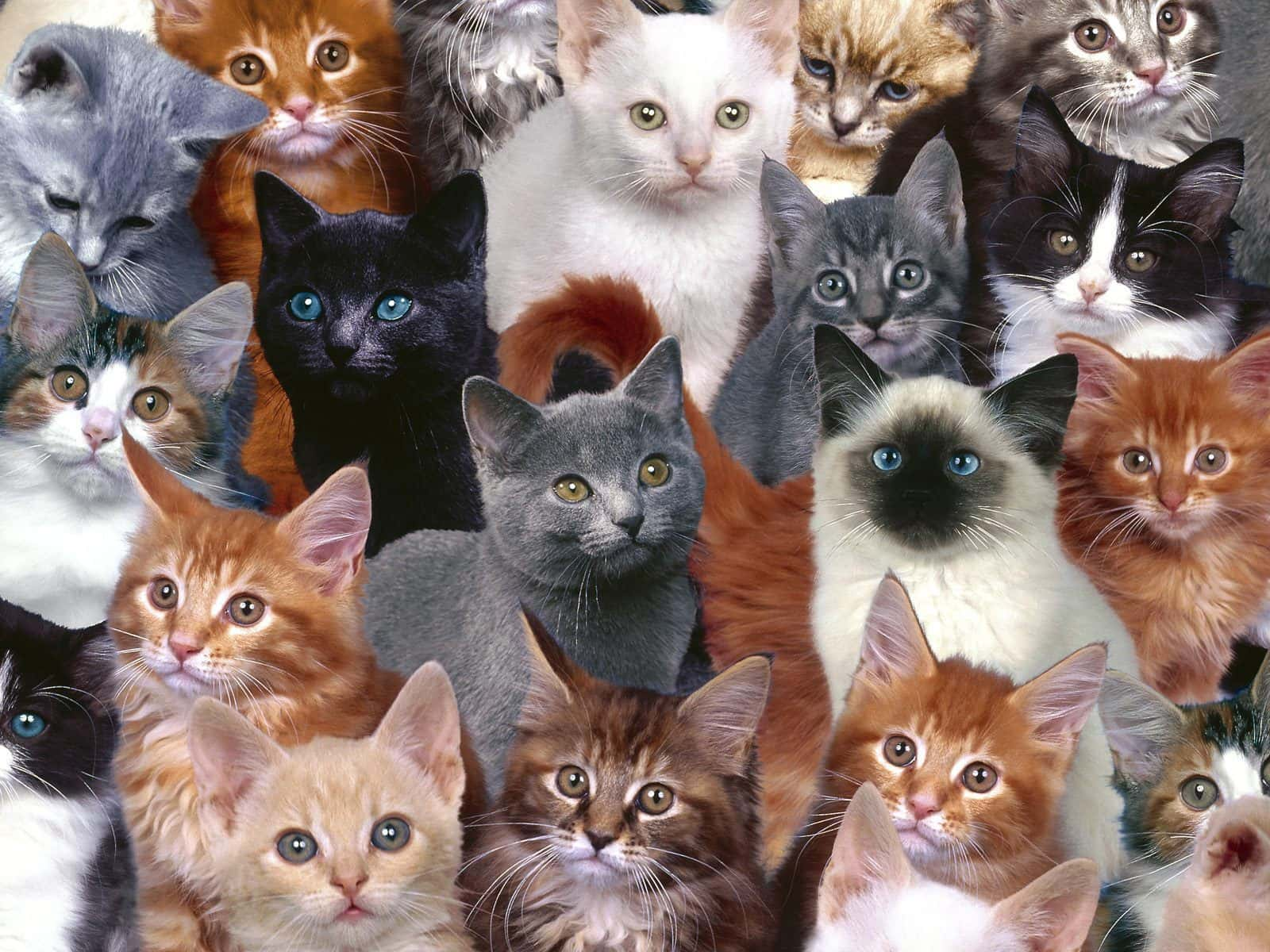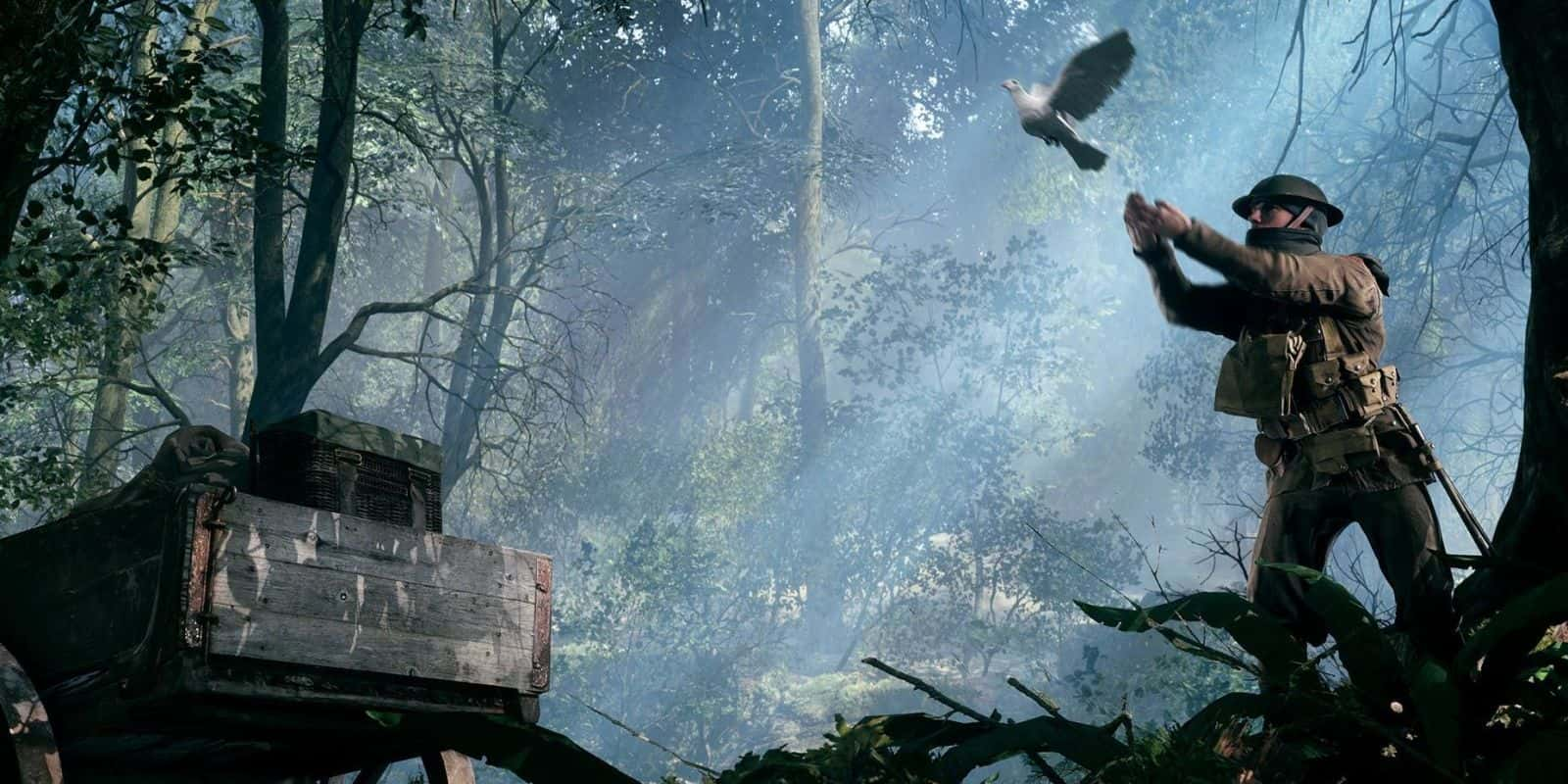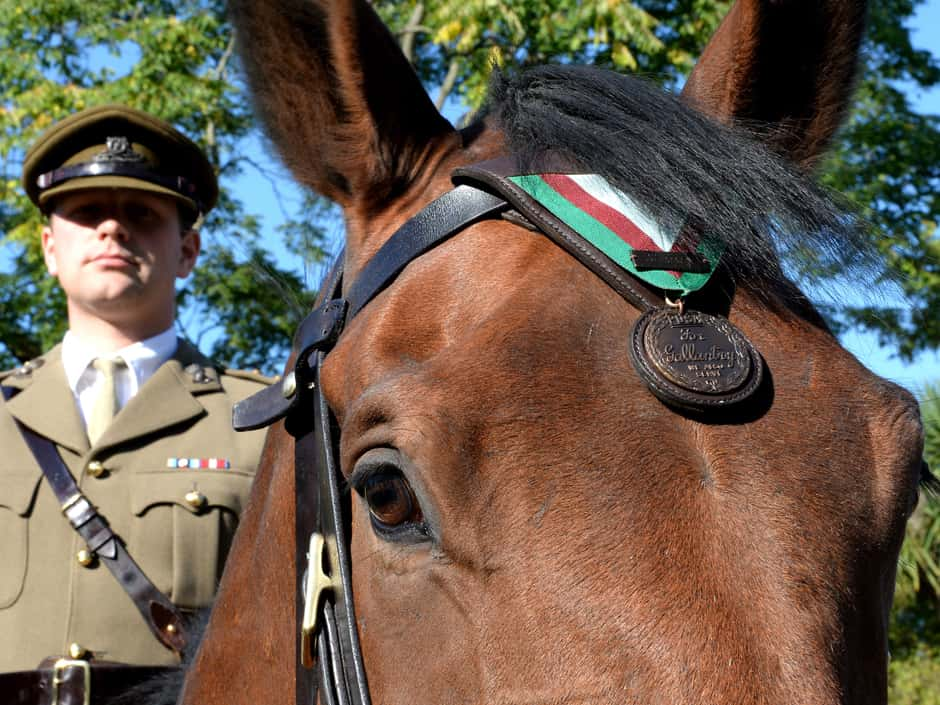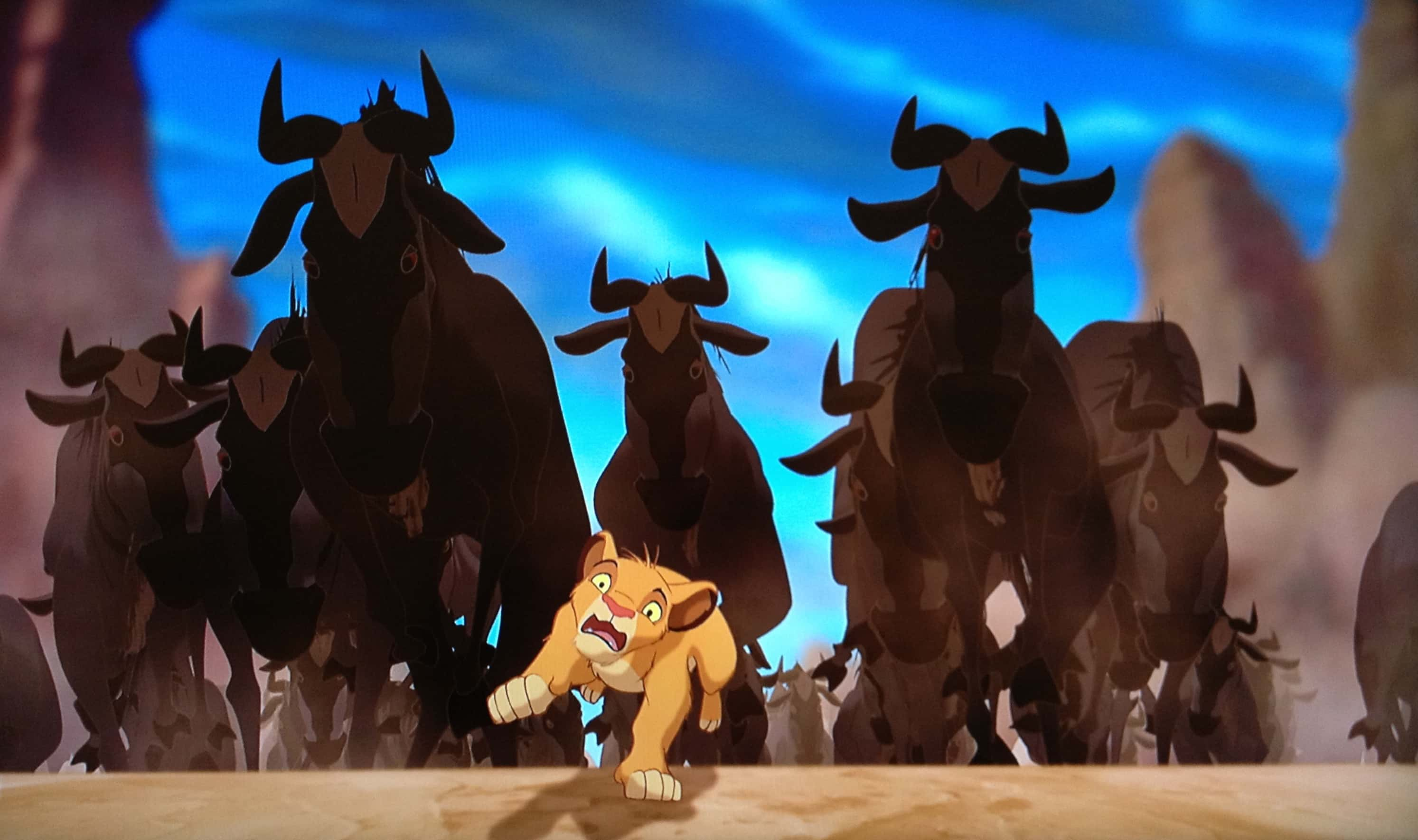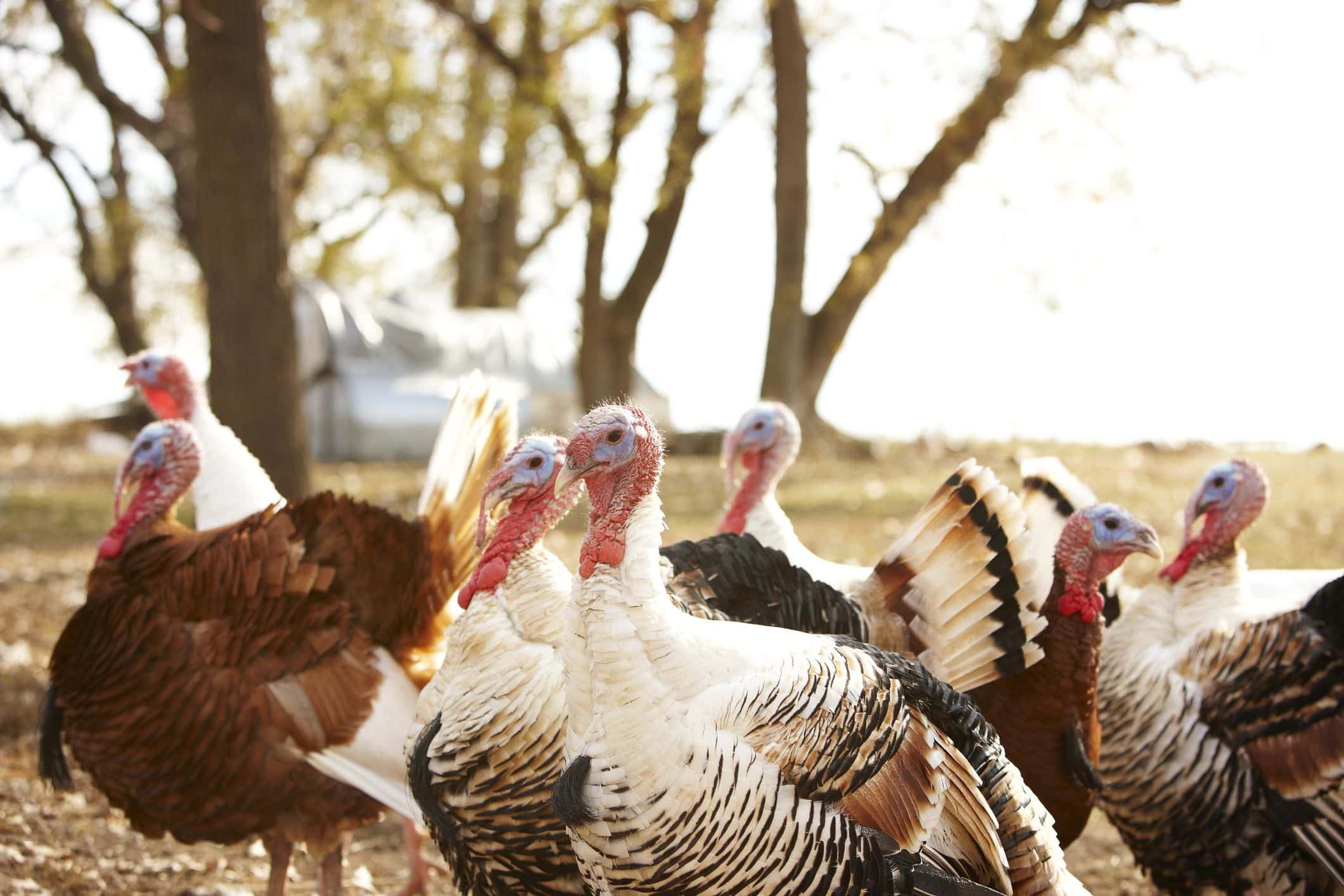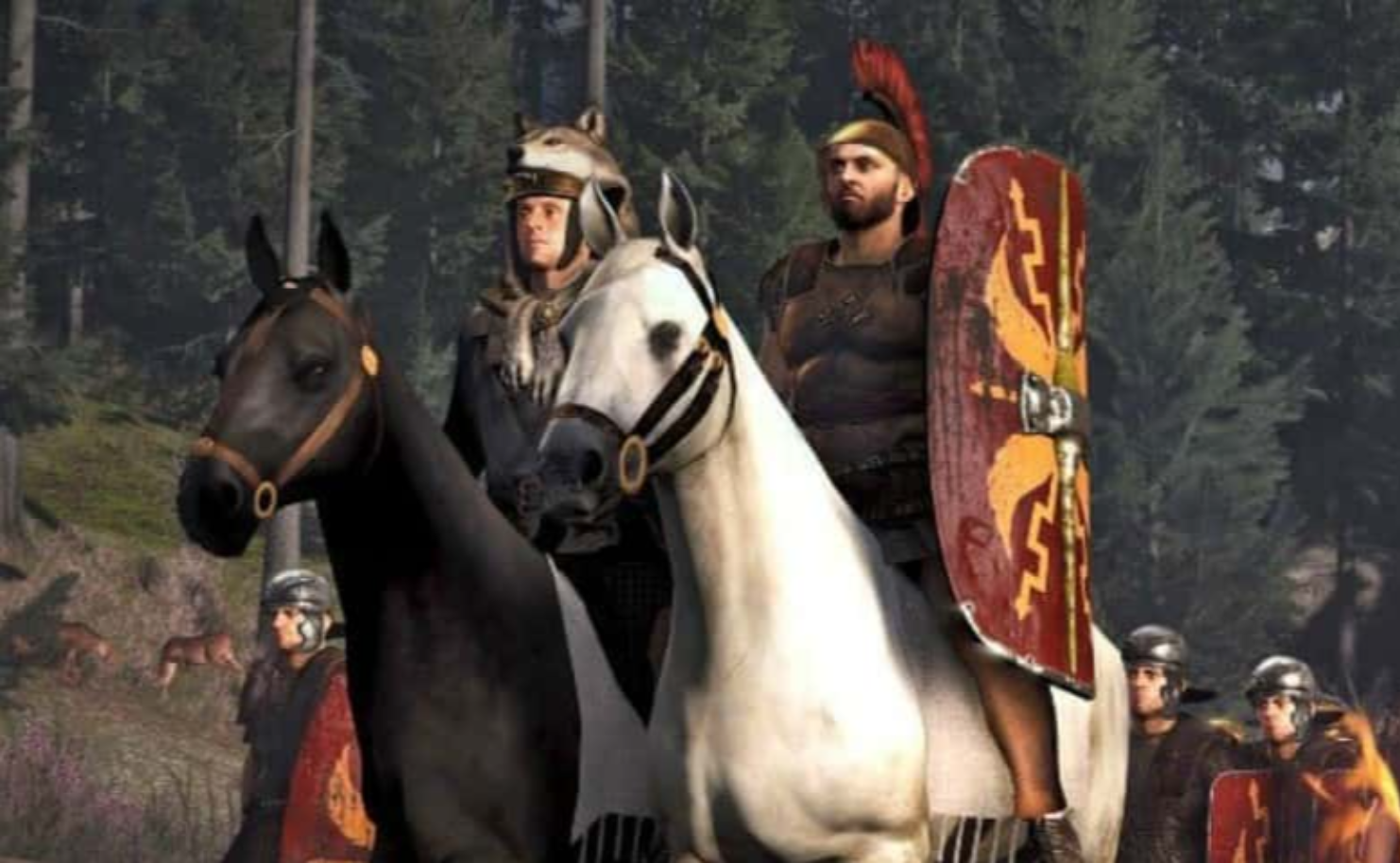It isn’t enough for humans to engage in battle with each other—somewhere down the line, they decided they needed backup from their critter companions. Here’s 43 surprising and eye-opening facts about how animals have been used in the history of battle.
43. Don’t Use Them for Aphrodisiacs Either
Contrary to an old and surprisingly popular idea, there is no evidence that rhinoceros have ever been used in battle. Their poor eyesight, sensitive skin, and unpredictable temperament would be serious hindrances against anyone who thought rhinos might be effective against their enemies. After that scene in Black Panther though, we can dream...
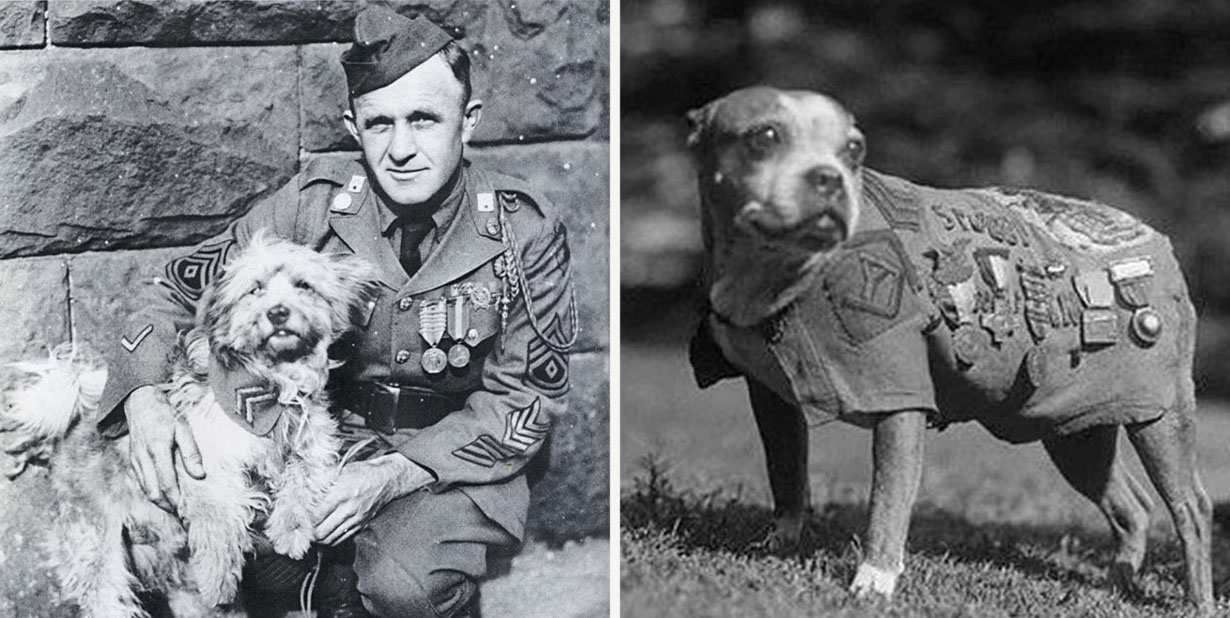
42. Friends at the Front
During the WW1, it wasn’t unknown for regiments to bring animals with them to the front for morale. In WWI, the British York and Lancaster army famously had their own cat as a mascot of sorts.
41. Heroic Hound
Lucca is a retired US Marine Corps dog who served tours in Afghanistan and Iraq. In her six years as a search and rescue dog, Lucca helped save hundreds of lives. Her active duty ended in 2012 when she was caught in an IED explosion and lost one of her legs. After her recovery, Lucca enjoyed retirement until her peaceful end in January 2018. She has the honor of being the only US Marine Corps dog to win a Dickin Medal.
40. Sorry, Bullwinkle, You Can’t Enlist
Amazingly, both the Swedes and Russians tried to use moose as a kind of winter cavalry. Sadly, for all our imaginations, moose proved to be terrible mounts as they easily got sick, proved hard to feed, and because of their status as a "flight animal" (meaning when faced with danger their impulse is to run away) they were utter cowards in combat. No word on if the Russians ever considered switching to bears instead.
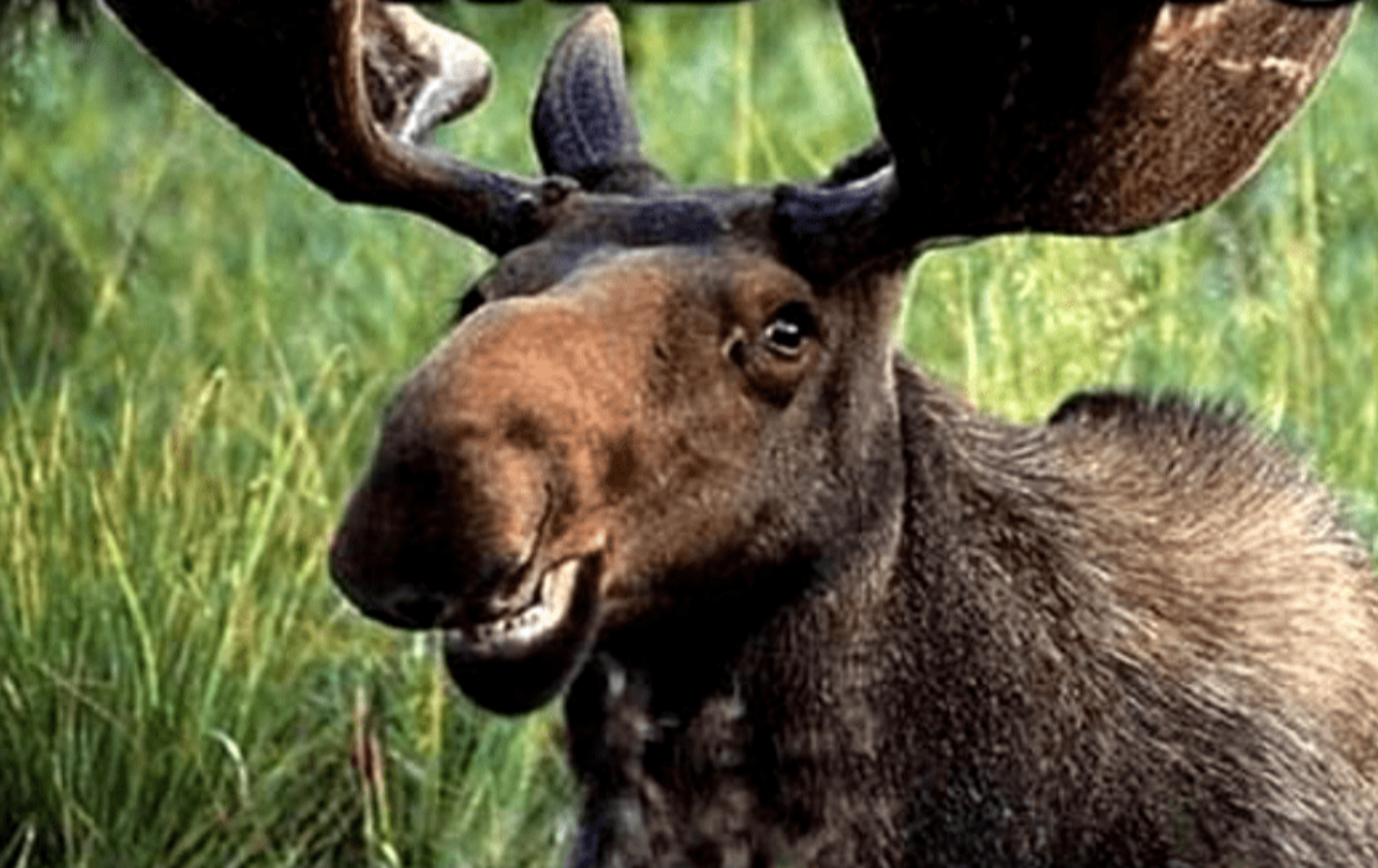 Pinterest
Pinterest
39. That’s Ridiculous! Or Is It?
The honey badger is known for its aggressive behavior and unmatched ferocity. In 2007, when the British occupied the Iraqi city of Basra, rumors began to spread that there were so-called "man-eating badgers" in the area. While the honey badger can be found in Iraq, they are quite rare, and their alleged appearance led the locals to believe that the British were, in fact, releasing the badgers as a army tactic. The Brits vehemently denied all accusations of badger-based battle.
38. Simba By Your Side
The Ancient Egyptians were said to take starving lions with them to battle. When the battle was joined, they would release the lions from their cages and aim them at their enemies, which honestly sounds scarier than any tank I've ever heard of. 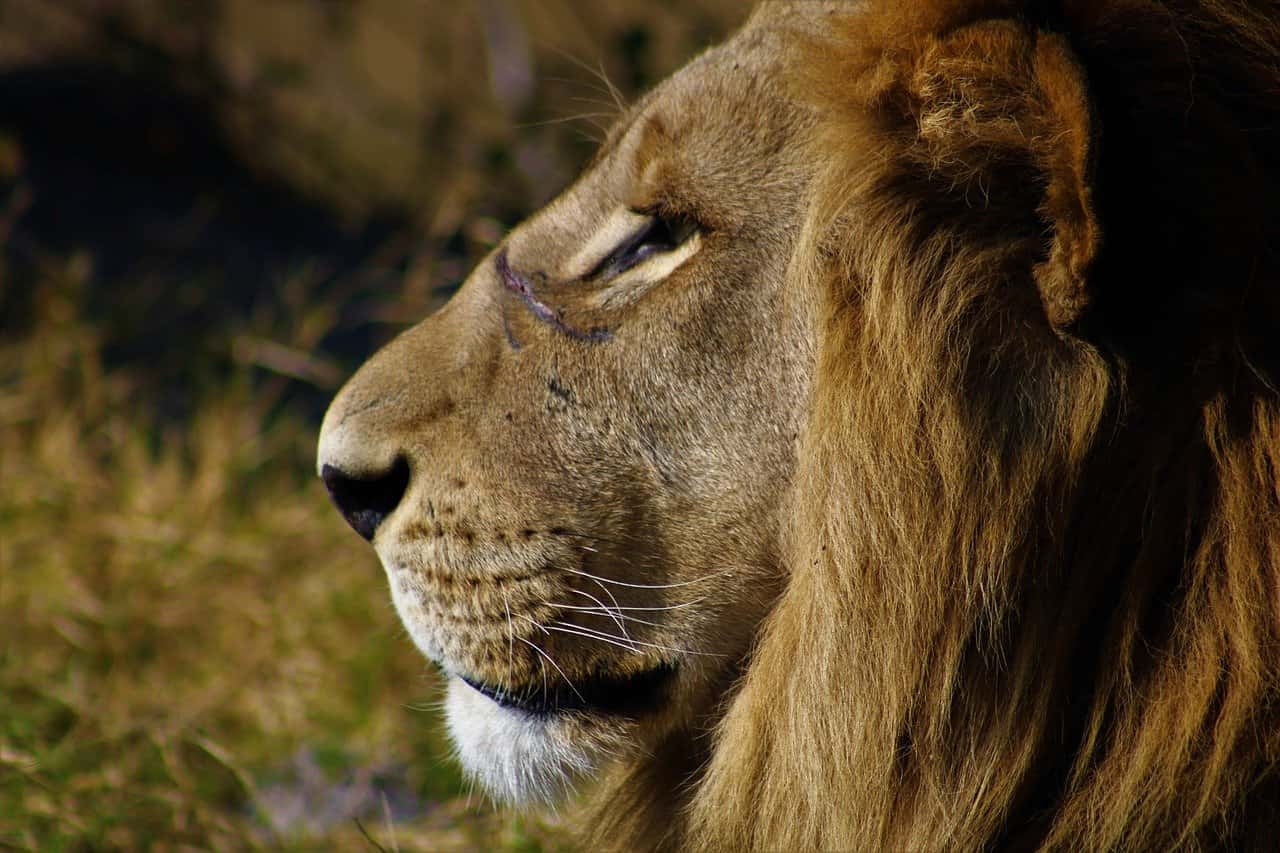 Pixabay
Pixabay
37. Faithful Feline Pet
The Egyptian Pharaoh Ramses II famously fought at the Battle of Kadesh, and he brought his favorite pet along with him: a full grown lion. The lion was allegedly one of the few members of Ramses' army that didn't flee after they were ambushed by the enemy. After the battle, the pharaoh had several of his more cowardly generals beheaded, and it's likely that their bodies were given to the courageous lion as a reward.

36. Hey Guys, Look What I Found!
Alexander the Great famously fought against battle elephants during his conquests of Persia and India—what fewer people know is that he quickly made them part of his own army as he gained Indian allies. He brought them back with him when he returned to Babylon, where they were said to guard his palace.
35. Purr-fect Mousers
In one of the more understated uses of animals in battle, the Royal Navy would always employ cats on their ships to control the rat population, which could pose a serious hazard to their supplies. This was a crucial task when the ships would go weeks without seeing land, though it must have been terrorized for anyone with cat allergies aboard.
34. Get With the Times!
Cavalry charges were used more frequently than you think, even into the 20th century. WW2 featured several cavalry charges on both sides of the conflict. The American 26th Cavalry charged the Japanese in the Philippines, the Polish cavalry charged German arm, and the Italian cavalry suffered devastating losses against Soviet lines, all in 1942.
33. European Tour Went Well
The first recorded instance of battle elephants being used in Europe was when Polyperchon, a former general of Alexander the Great, besieged the Greek city of Megalopolis in 318 BC. Unfortunately for him, another veteran of Alexander’s campaign, a soldier by the name of Damis, was in the city, and he had experience fighting against the creatures. With his help, the people of Megalopolis managed to defeat Polypherchon and his elephants.
 Youtube
Youtube
32. Was He a Pole-ar Bear?
During the WW2, the Polish Second Corps enlisted a Syrian brown bear named Wojtek into their ranks. Traveling with the corps to Italy in 1944, Wojtek helped carry ammo during the Battle of Monte Cassino (though he did not participate in any actual combat, robbing us of a truly epic moment in history).
31. Brave Bird
Cher Ami was a highly decorated pigeon who delivered messages during the WW1. What set Cher Ami apart is the fact that he was shot while delivering an important message, but kept going to his destination. Thanks to him, the rescue of 194 army people was successfully accomplished. Cher Ami was awarded the French Croix de Guerre for his heroic actions.
30. Glorified Wagons
Surprisingly, the earliest use of cavalry came even before the Iron Age, when men would use horses to pull battle chariots. The first known of chariots came from Central Asia, but other civilizations such as the Egyptians quickly adapted the technology for their own.
29. Man’s Best Friend
It should come as a surprise to nobody that dogs have been used in battle ever since we first tamed them. The Romans went one step further by breeding of specific type of dog, the molossus, for battle. These animals were sometimes given wicked, spiked collars, chain mail armor, and were trained to arrange in attack formations. Though they no longer exist, molossians are the ancestors of today's mastiffs.
28. I See Your Chariot and Raise You…
Ancient Assyria was arguably one of the first army superpowers in history. They were also the first ones to find a match for battle chariots—they utilized horse archers, which were even faster and more mobile than the chariots that had dominated battles for centuries.
27. Canine Carnage
When the Normans invaded Ireland, both sides made use of battle dogs. The Normans used large mastiffs against the Irish defenders. The Irish, meanwhile, were faced with the formidable Norman knights mounted on horseback, so their solution was to train their huge Irish Wolfhounds to tear the knights off their horses.
26. Slaughter Through Sickness
The bubonic plague completely ravaged the world's population in the Middle Ages, but some army minds thought to use the terrible disease to their advantage. The Mongols would take carcasses of animals that had passed from the plague and catapult them into cities that made the mistake of resisting them. The plague would thus spread throughout the population, weakening the city until it had no choice but to surrender.
25. No Vampires Were Harmed
In one of the stranger episodes of WW2, the Americans planned to send bat blast against the Japanese. They would attach small explosives to Mexican free-tailed bats, who would then fly up into the attics of buildings all across Japan. The explosives could all be detonated at once, sowing chaos and panic throughout cities. After $2 million was spent on the experiment, the whole thing was called off, as another army project—the Manhattan Project—was nearing fruition and the bat explosives began to look pretty darn trivial.
24. Hump Day
The first recorded instance of camels in battle was when the Arab king Gindibu faced off against Assyrian forces in 853 BC, at the Battle of Qarqar. Later, camels were armored for battle much like horses were in other parts of the world.

23. Vicious Vermin
It's safe to say that WW2 was quite the time for experimenting with animals in army uses. The Allies once tinkered with an idea which involved taking passed rats, filling them with explosives, and placing them in German factories. The workers would ideally clean up the passed rats by throwing them into the boiler fires, causing them to explode and destroy the factory. The plan was never carried out, but the Nazis actually discovered the plan and spent the time and money to examine any passed rat they found. 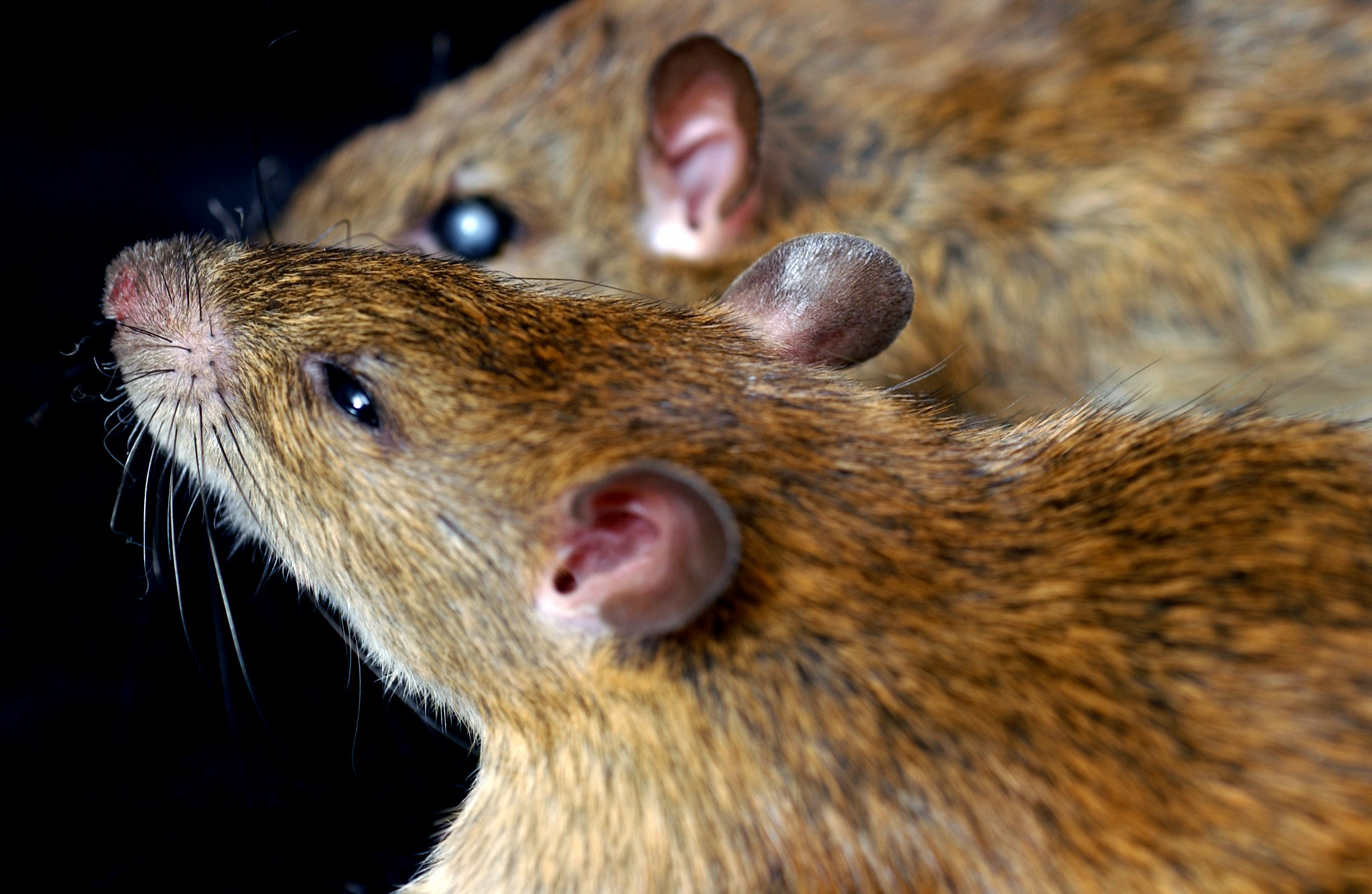 IRRI Photos , Flickr
IRRI Photos , Flickr
22. Rescue Rats
In more recent years, another use has been found for rats in battle—a Belgian company has trained rats to find hidden landmines using their strong sense of smell. It saves a lot of lives, and the rats are able to walk on the mines since they’re too light to set them off.
21. We’re All Friends Here!
One of the most famous cavalry units in human history was the Companion Cavalry of Ancient Macedonia. Developed by Philip II, and immortalized by his son, Alexander (yes, that guy again), the Companion Cavalry were heavily-armed shock people made up of the Macedonian upper classes. These highly trained horsemen proved crucial in Philip and Alexander’s greatest victories, showing how effective heavy cavalry could be in combat.
20. Trend-Setting Terrier
When the German planes tore apart London during the Blitz, a heroic stray dog named Rip joined in the efforts to save people in the rubble. He was the first noted search and rescue dog working with the Air Raid Patrol. Rip helped save over a hundred lives during the Blitz and inspired British authorities to train more search and rescue dogs after the conflict.
19. Flipper Will Finish The Fight!
When the US Navy had trouble finding underwater mines in the Persian Gulf, they ended up turning to dolphins for help. Because of their echolocation abilities, dolphins are able to sense mines when they would be completely invisible to human eyes.
18. I Did It First! And It Didn’t Work!
Contrary to popular belief, Hannibal wasn’t the first guy to use battle elephants against the Romans. That honor goes to King Pyrrhus of Epirus, who fought the Romans on behalf of Tarentum. Pyrrhus famously won several victories against Rome, but the losses he suffered (including all his elephants) led him to famously declare “If we win one more victory against Rome, we shall be utterly destroyed!” This led to the phrase "Pyrrhic victory," which means winning at such a high cost that it might as well have been a defeat.
17. A City for a Horse
Bucephalus, Alexander the Great's horse, is perhaps one of the most famous army animals in history. Thought to be untameable, a 12-year-old Alexander managed to soothe him by realizing that the beast was afraid of its own shadow. Taming the horse, Alexander rode him across Asia for ten years, until the old Bucephalus finally collapsed during the Battle of the Hydaspes. Alexander was so saddened by this loss that when he next founded a army base and town, instead of naming the place after himself (like he usually did), he named it Bucephala after his faithful horse. 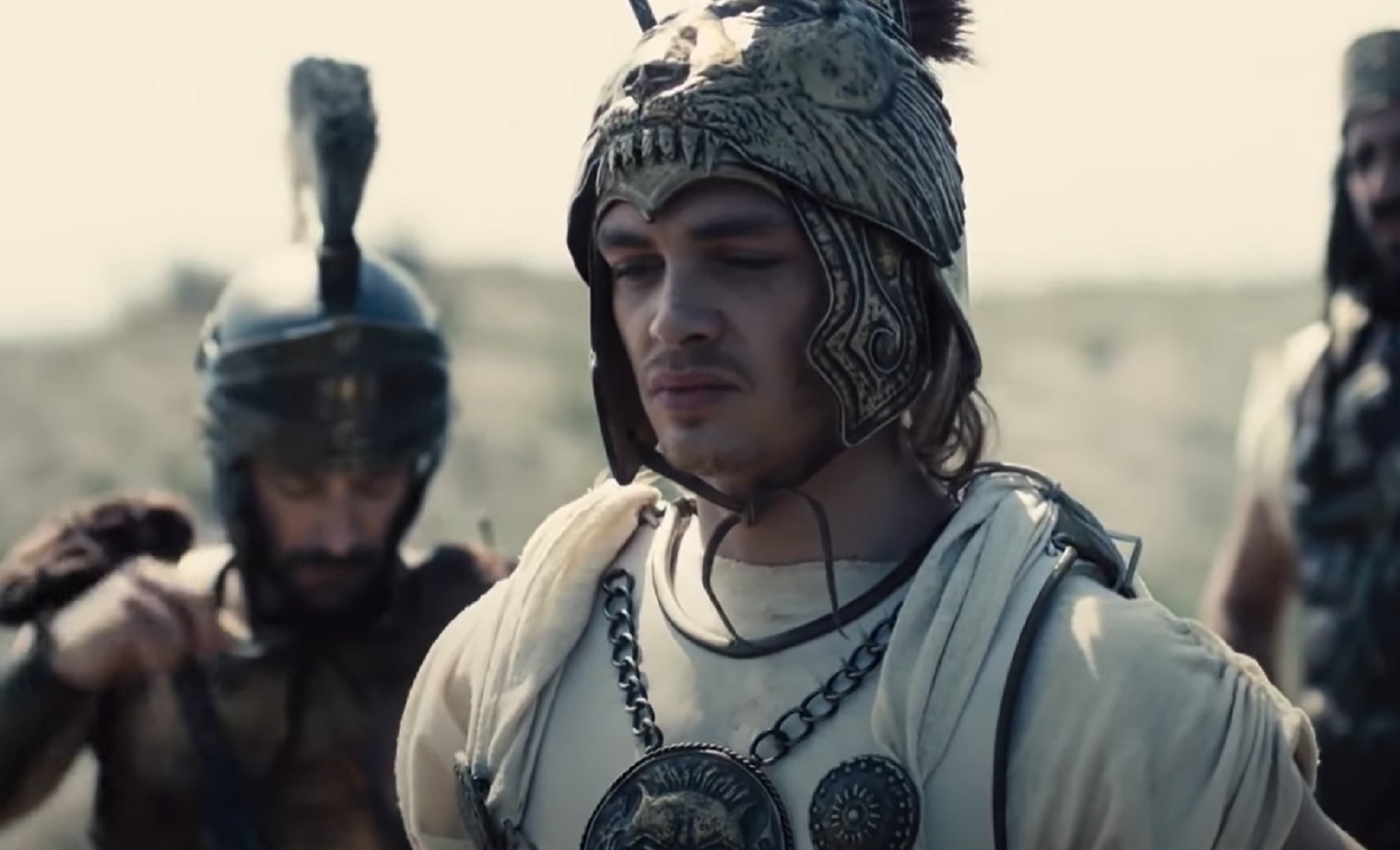 Gruppe 5, Alexander the Great (2014)
Gruppe 5, Alexander the Great (2014)
16. A Botched Experiment
The Soviet Union famously tried to train dogs to blast up enemy tanks by running at them while wearing a explosive jacket. The idea was to get them to run under the tank, which would trigger the device and set the explosive off. Results of the program were mixed at best. Though there are reports that many German tanks were at least damaged by the Russian dogs, the animals were also known to flee back to their own line when they heard gunfire. Their explosives would often detonate when they leaped into the trenches, usually ending Soviet army man. In another oversight, the dogs were trained with Russian tanks, and so they often recognized their own tanks as the ones to run towards. Needless to say, it wasn’t the brightest idea the Soviets ever had.
15. Silver Lining
Ironically, while countless animals were dying during the WW1, the conflict led to an emerging push for animal rights.The Army grew very attached to the animals they brought with them, and veterinarians with the army would encourage the humane treatment of animals.
14. Talk About Navy "Seals," Am I Right?!
Just like with dolphins, the US Navy trains sea lions as army assets. The sea lions are used to identify mines and enemy divers. They can also carry cameras underwater to give a better view of the ocean floor.
13. Mighty Mongolia
Genghis Khan was one of the most successful conquerors in human history, and his successes would never have been accomplished without the Mongol cavalry. The Mongol armies were mostly made up of highly skilled horse archers or heavily armed lancers. Their horses were small, and not very fast, but they were very tough and could be ridden on nearly any kind of terrain.
12. Copycats
After dealing with battle elephants successfully, the Romans decided two could play at that game and proceeded to use their own elephants during their conquest of Greece. In one famous incident, the Roman general Pompey tried to enter Rome on a chariot drawn by elephants, but the gates were too narrow.
11. Psychological Battle
In the sixth century BC, the Persian Empire conquered Egypt and made it a client kingdom. According to a disputed source, one way the Persians did so was to march forward towards a battle while carrying or herding cats in front of them. The Egyptians regarded cats as sacred creatures, and so dared not injure any of them. If this story is true, it would surely have been one of the most adorable victories in the history of battles.
10. Avian Email
Pigeons were among the first animals used in times of battle. As early as King Cyrus the Great of Persia, pigeons were used to send messages across far distances, but they weren't quite as effective as some people think: their homing ability only allowed them to return home, meaning they could only be used to send messages from the front lines back to a base of operations, not the other way around.
9. The Animal Award Show
During WW2, the British established the Dickin Medal to honor the heroic acts of animals during the battle. For that reason, it’s also commonly called the animals’ Victoria Cross. The awards were given out between 1943 and 1949 and were resurrected again in 2000.
8. Carry Your Share
Throughout history, animals have been used to transport weapon, supplies, reinforcements, and pretty much anything else to help win wars. Horses, camels, elephants, mules, and oxen are only a few examples of transport animals without whom wars would have been much more difficult to fight, let alone win.
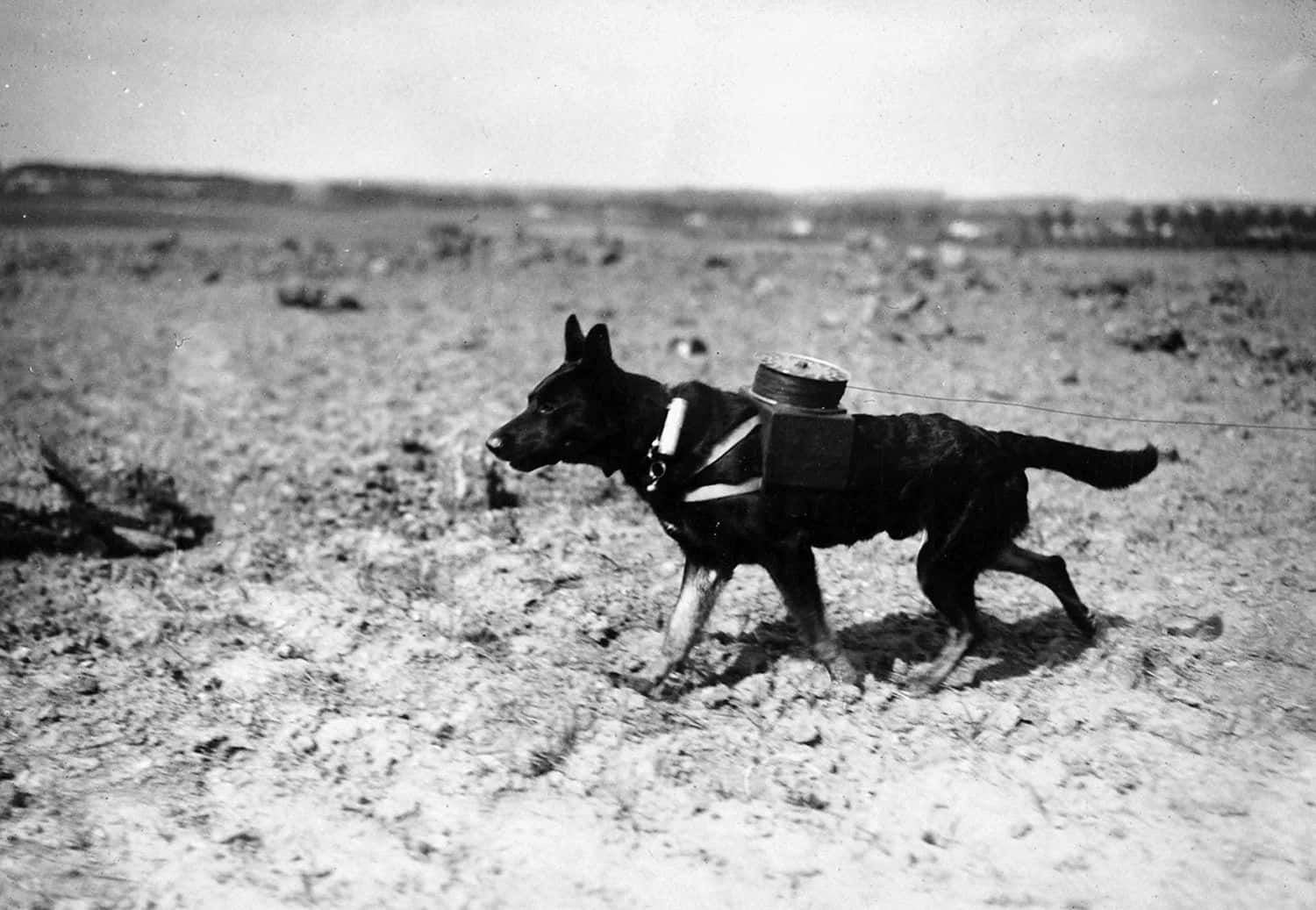 Pinterest
Pinterest
7. A Unique Way to Say “Welcome”
When the Romans besieged the Greek town of Themiscyra, they dug tunnels under the town’s walls to get inside. However, the Romans forgot that Themiscyra was well known for its honey production. When the citizens of the town discovered the tunnels being dug under their feet, they sent thousands of bees down as an early welcoming party. Suffice it to say, the Romans didn’t appreciate that gift.
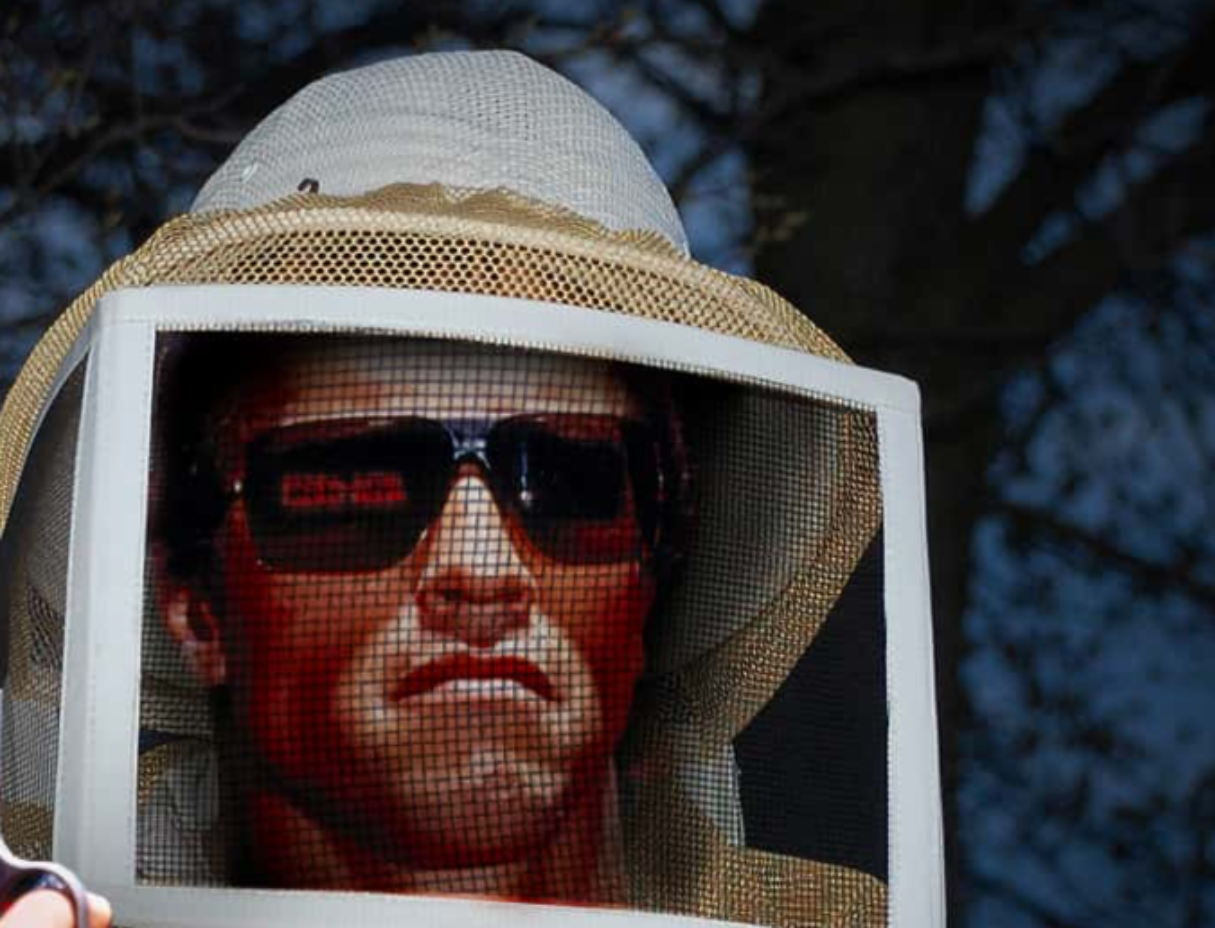 Pinterest
Pinterest
6. Casualties of Battle
As much as people have awarded individual animals during times of battle, it’s worth remembering just how many animals give their lives in service to conflicts which they do not sign up for. Over 16 million pigeons, horses, camels, dogs, cats, and other animals were brought into the WW1; nine million would never come home again.
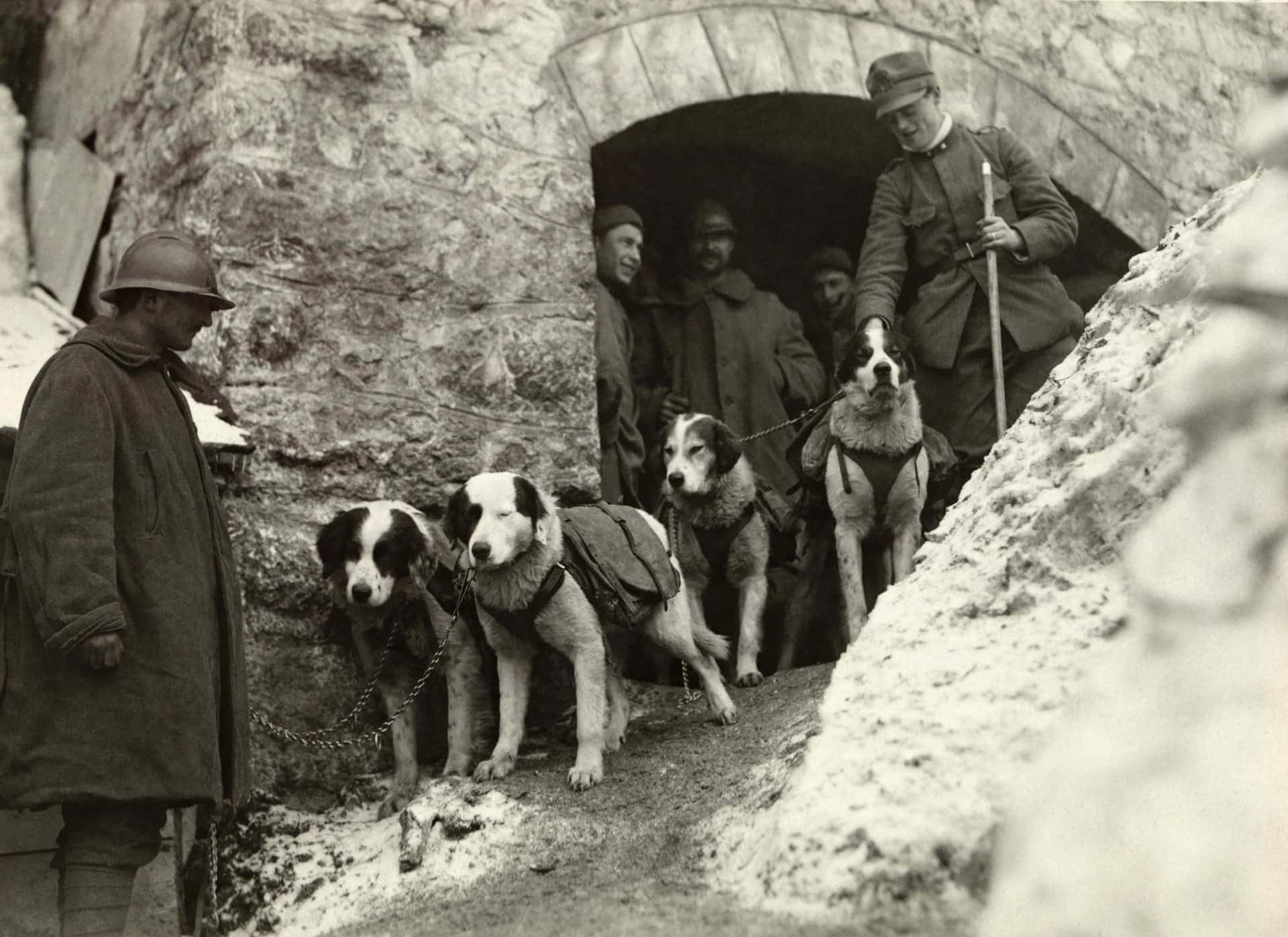 Pinterest
Pinterest
5. No Monkey Business
When South Africa sent army to the WW1, one of their uniformed companion was actually a baboon! Jackie was the pet of Private Albert Marr, but he became the mascot for Marr’s entire army. Both Jackie and Marr were wounded during the conflict, and after the battle was over, they worked to raise money for wounded veterans.
4. Cow Catastrophe
The idea of stampeding cattle is certainly a scary one when you’re on the receiving end (just ask Mufasa and Simba), so it’s no surprise that armies have tried winning battles with such a tactic. In West Africa, the Songhai Empire had used cattle tactics successfully many times, until the year 1591, that is. That year, at Tondibi, the Songhai faced off against Moroccan invaders and started the battle by unleashing their signature stampede. Unfortunately for the Songhai, the Moroccans had something their previous enemies didn’t have: guns. The cows were so spooked by the gunfire that they turned around en masse and trampled their own side instead!
3. Pigeon Paparazzi
Aside from carrying important messages, army pigeons were also once used as an old-fashioned sort of drone. They would fly over enemy bases with cameras attached to them, then return home, providing a literal bird’s eye view of the enemy's defenses.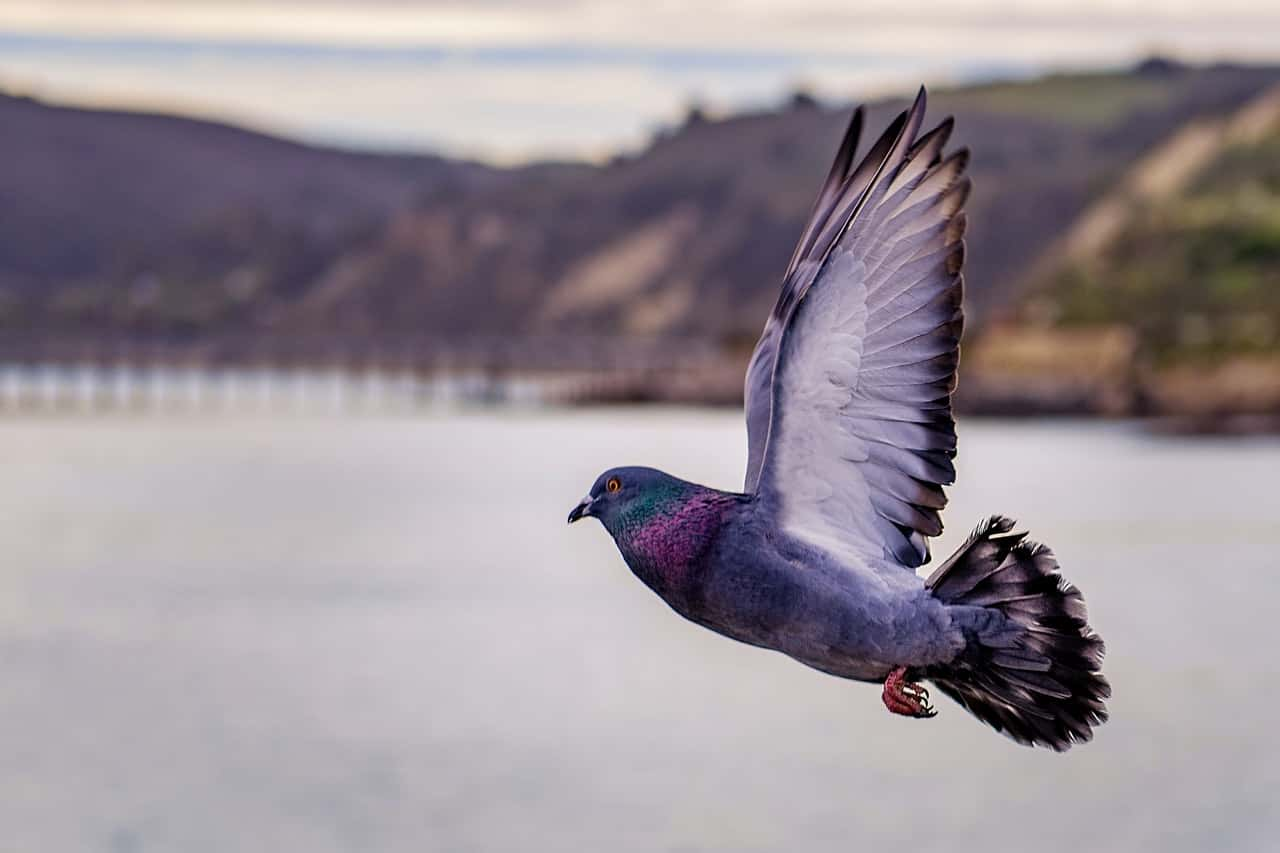
2. Thanksgiving Reinforcements
While the Spanish Civil Battle was raging (in Spain, obviously), the monastery of Santa Maria de la Cabeza was besieged by the Fascists. To help the defenders, pilots would load supplies into planes, attach them to live turkeys, and drop them over the monastery. The turkeys acted as live parachutes for the fragile supplies, and would also be eaten by the defenders, who we can only hope had tears in their eyes while they apologized to their feathered saviors.
1. Battle Bacon!
According to Pliny the Elder, the Romans found a crazy way to combat battle elephants. They discovered that the shrill squeals of a pig would cause elephants to go into a wild frenzy, usually trampling all over any nearby people. With this knowledge, whenever the Romans faced elephants in battle they made sure to bring along battle pigs to disrupt the enemy's formations.
Sources: 1, 2, 3, 4, 5, 6, 7, 8, 9, 10, 11, 12, 13, 14, 15, 16, 17, 18, 19, 20, 21, 22, 23, 24, 25, 26, 27, 28, 29, 30


